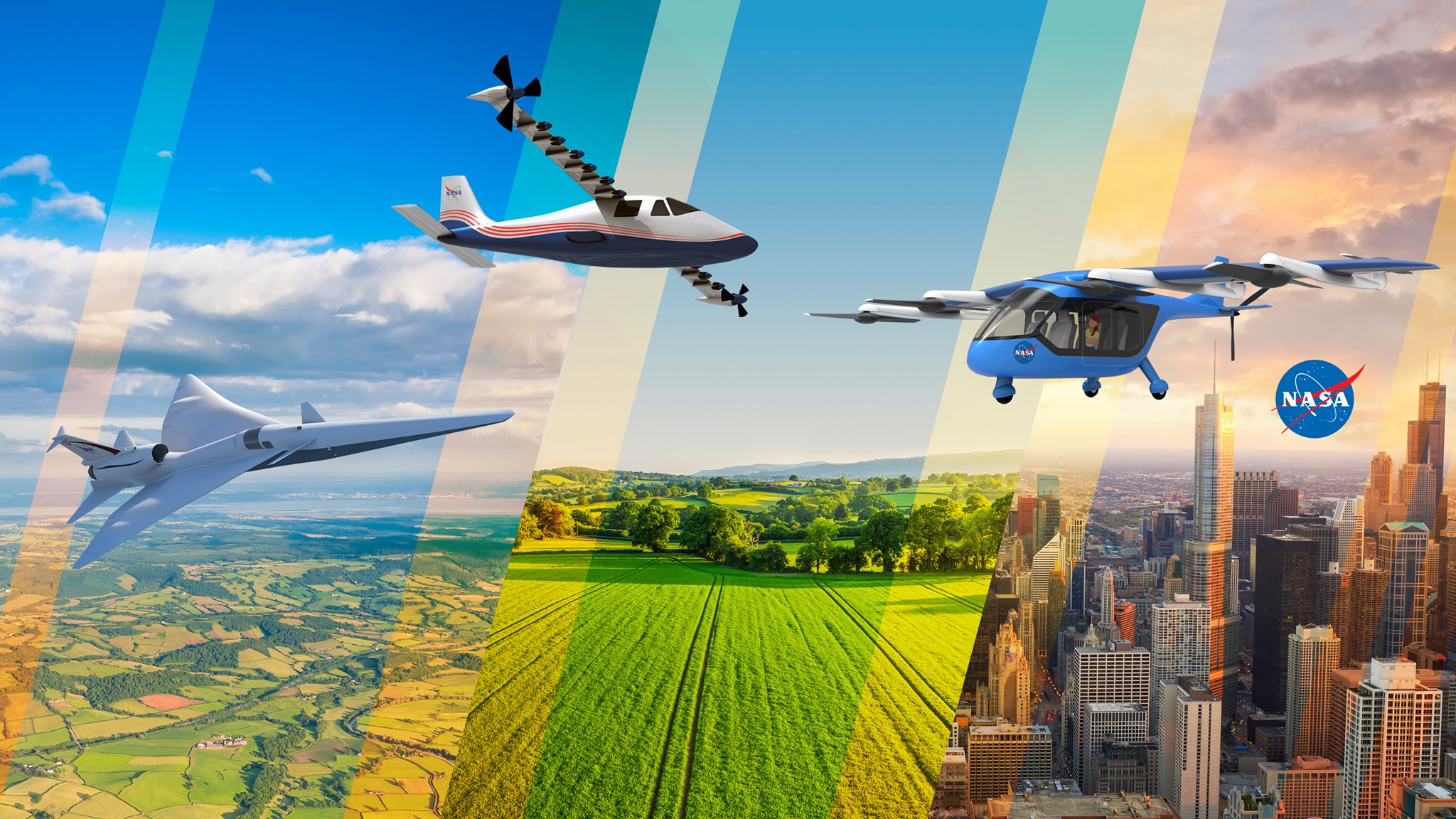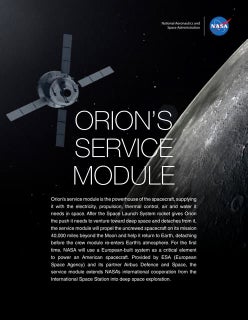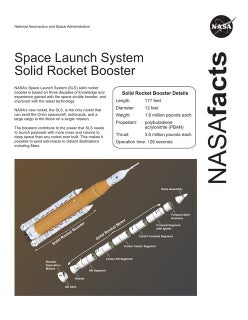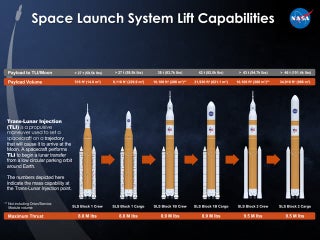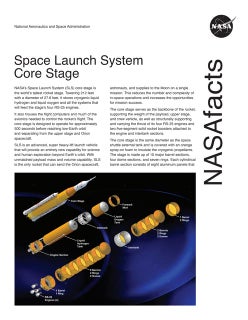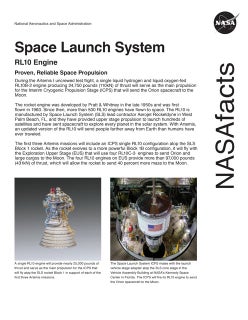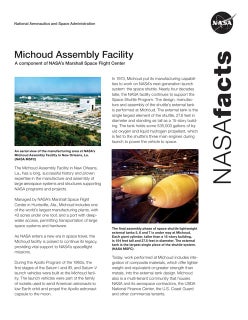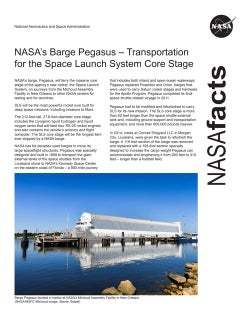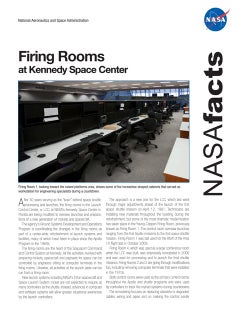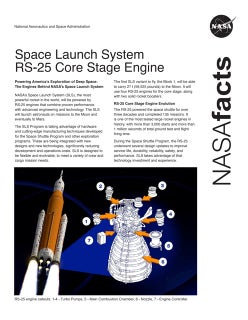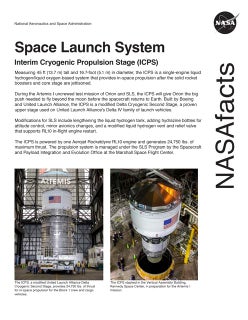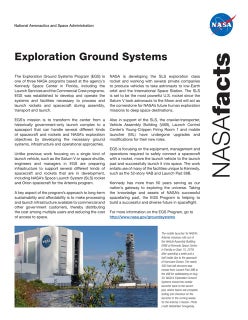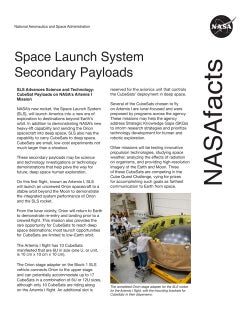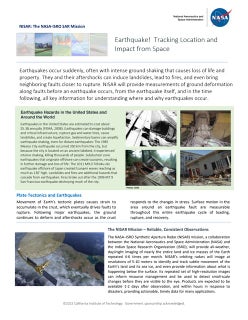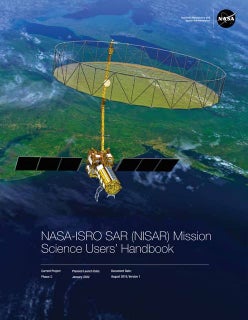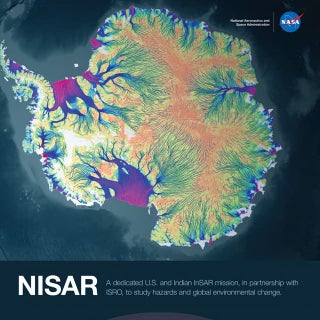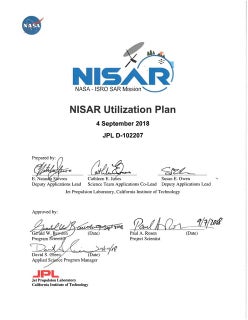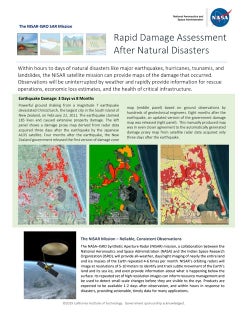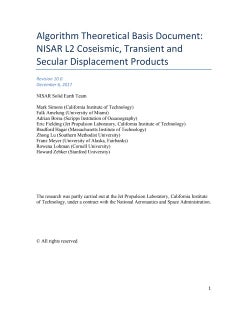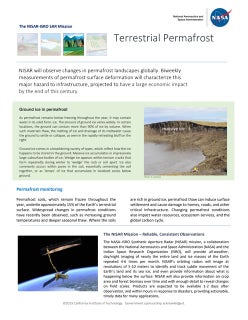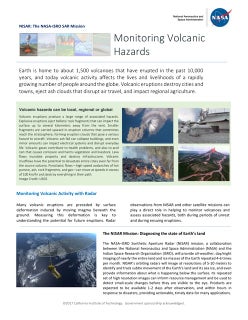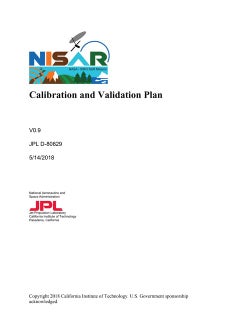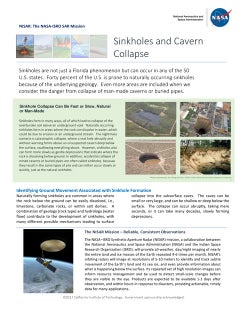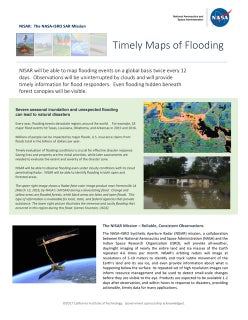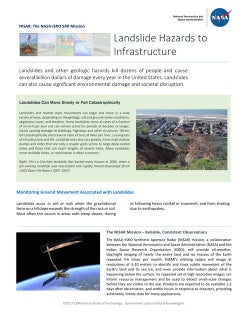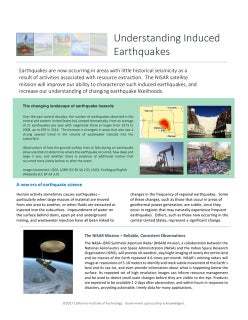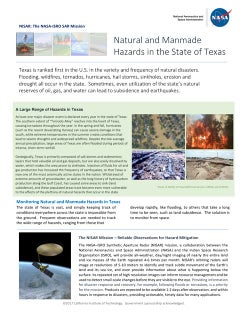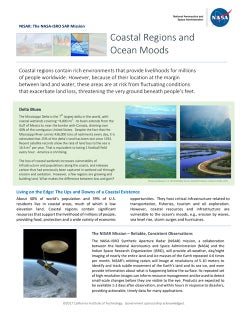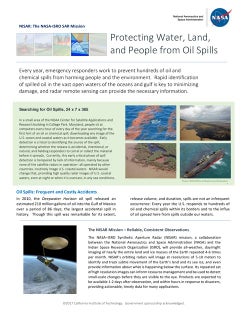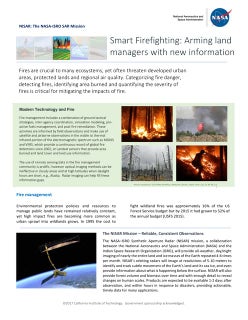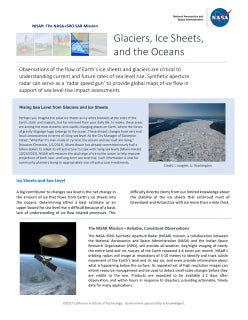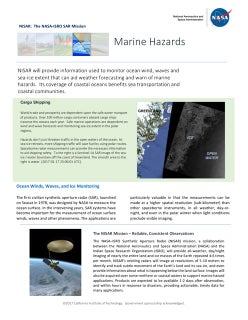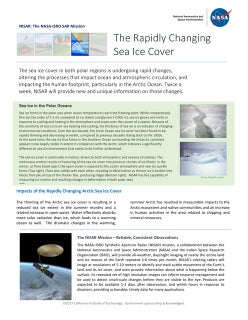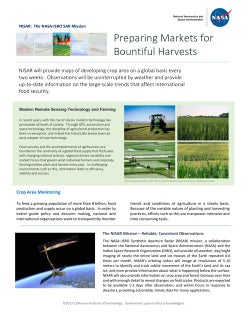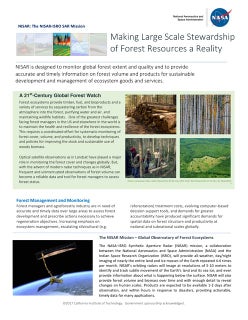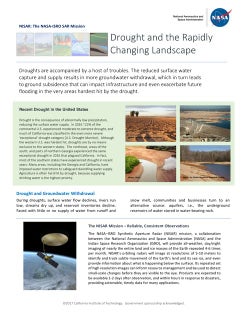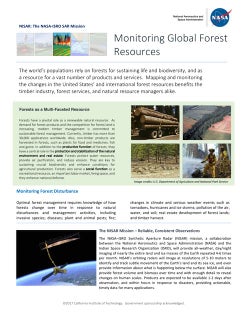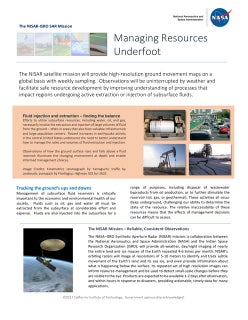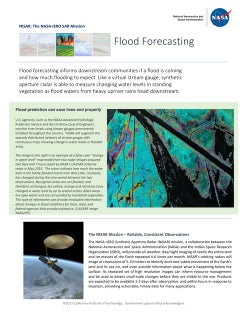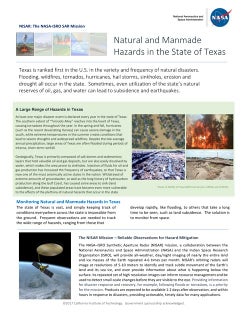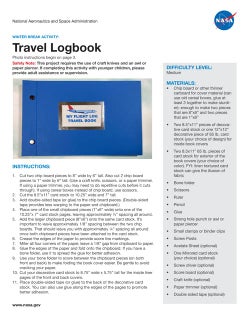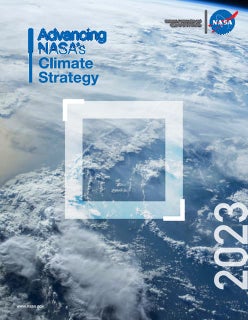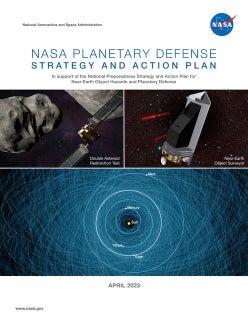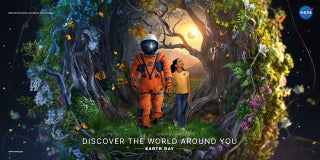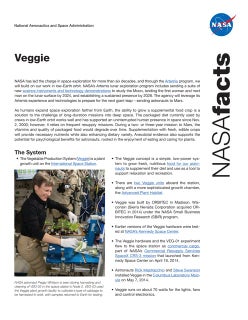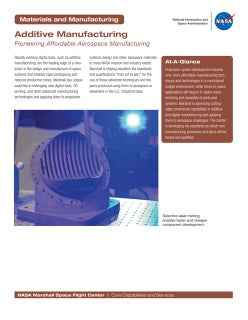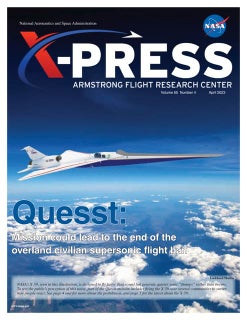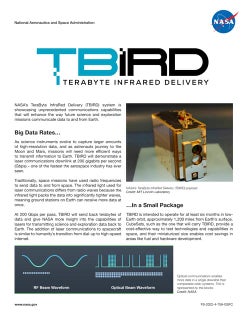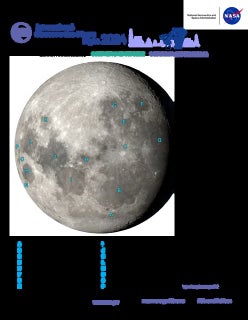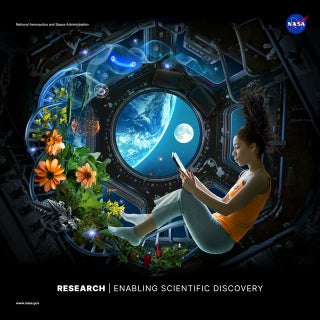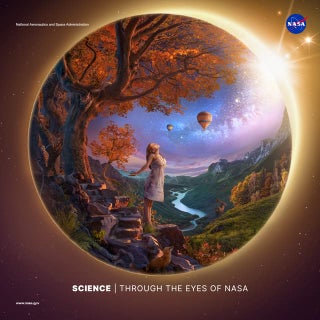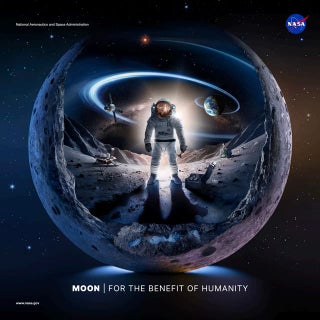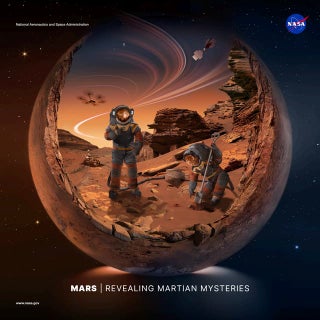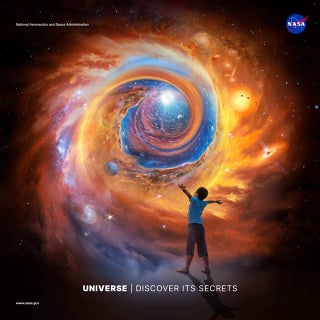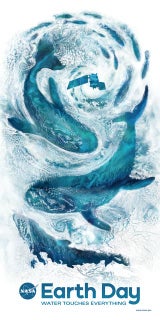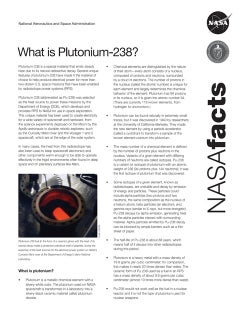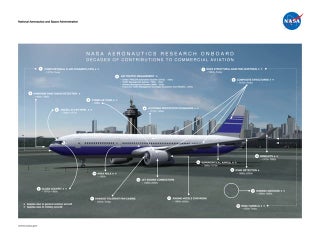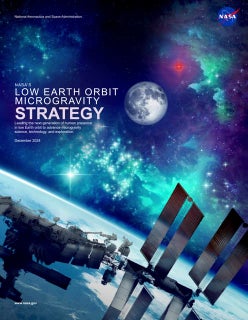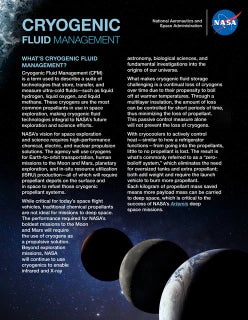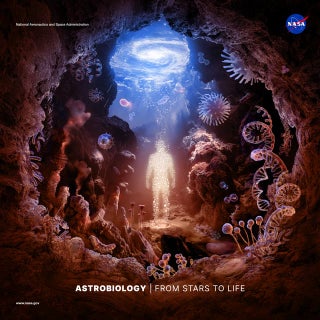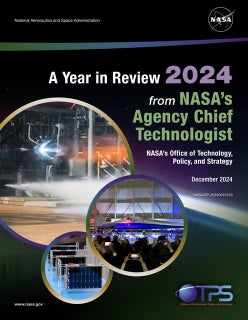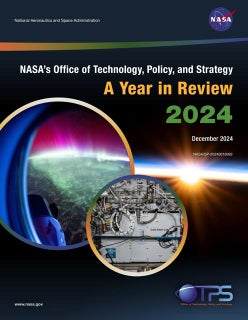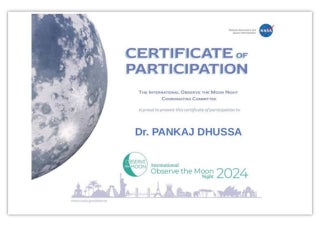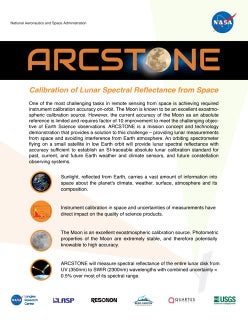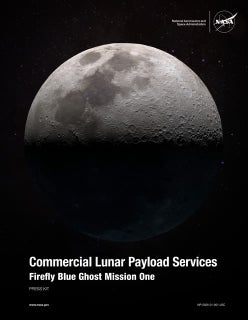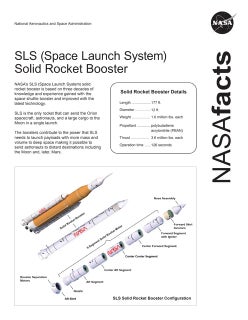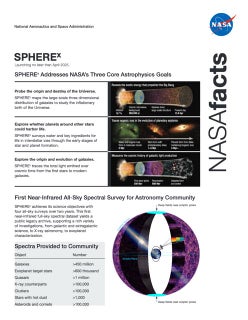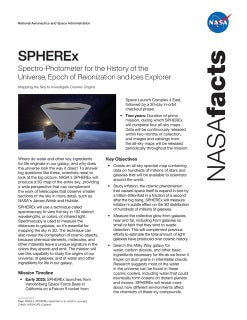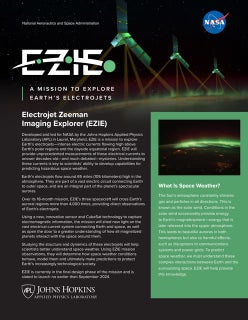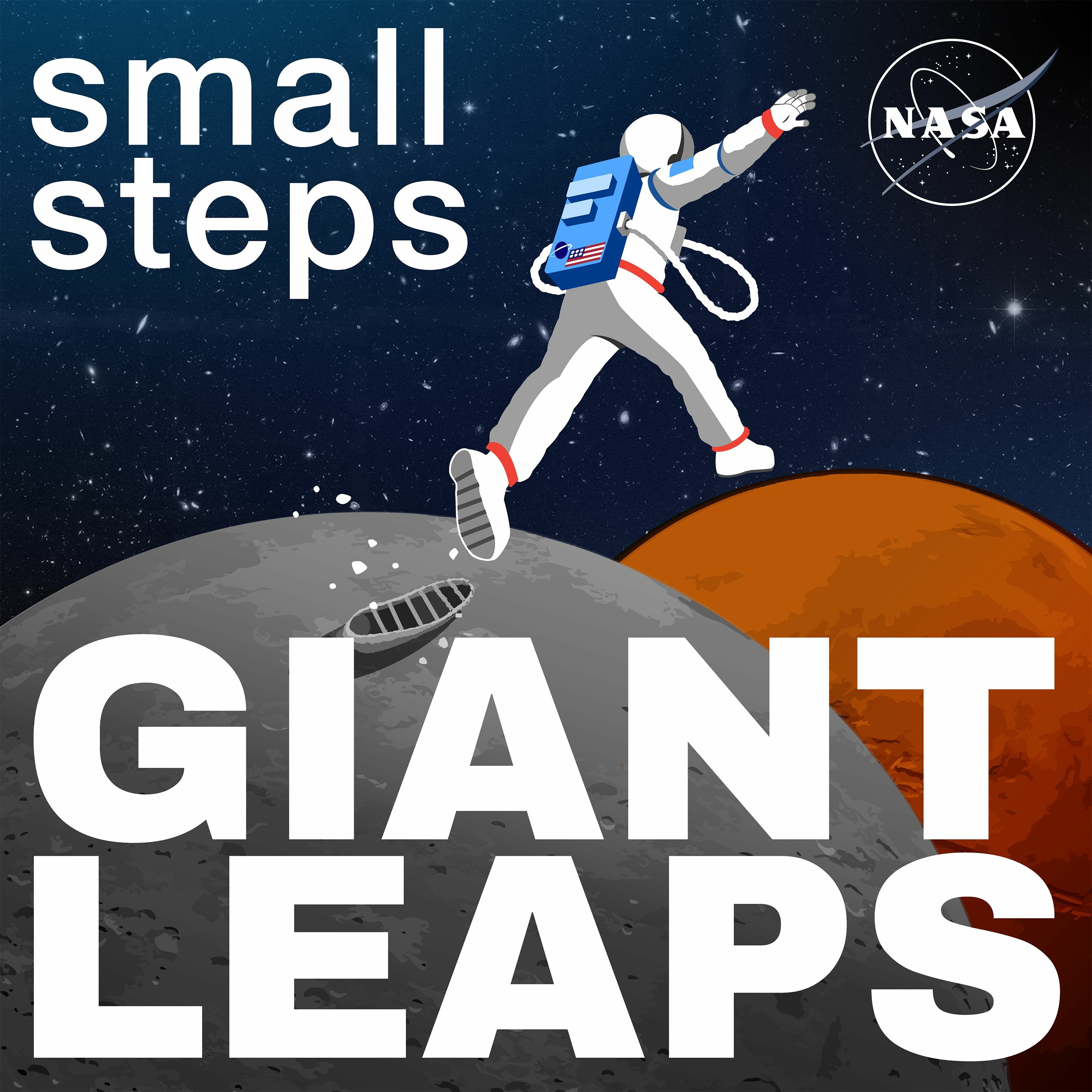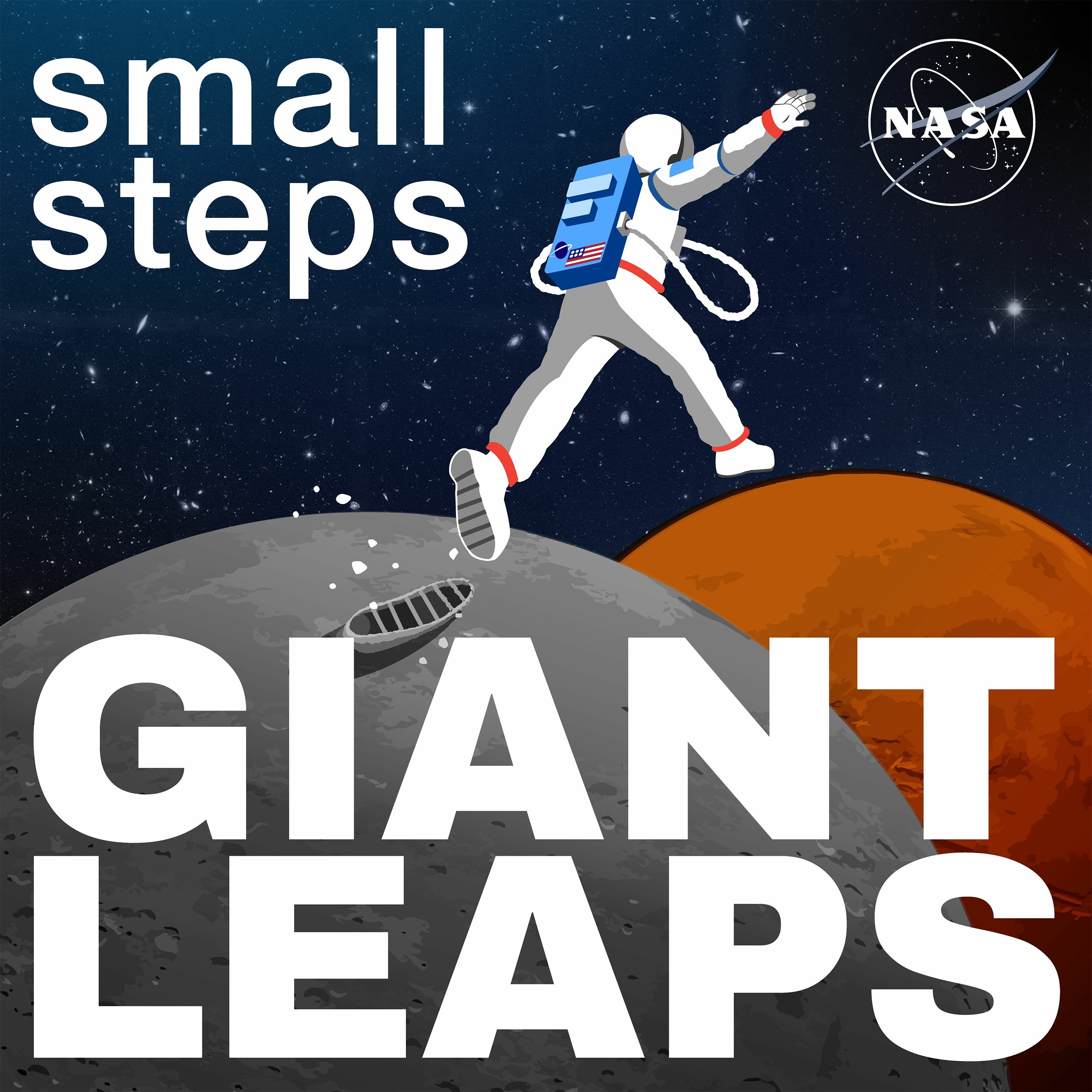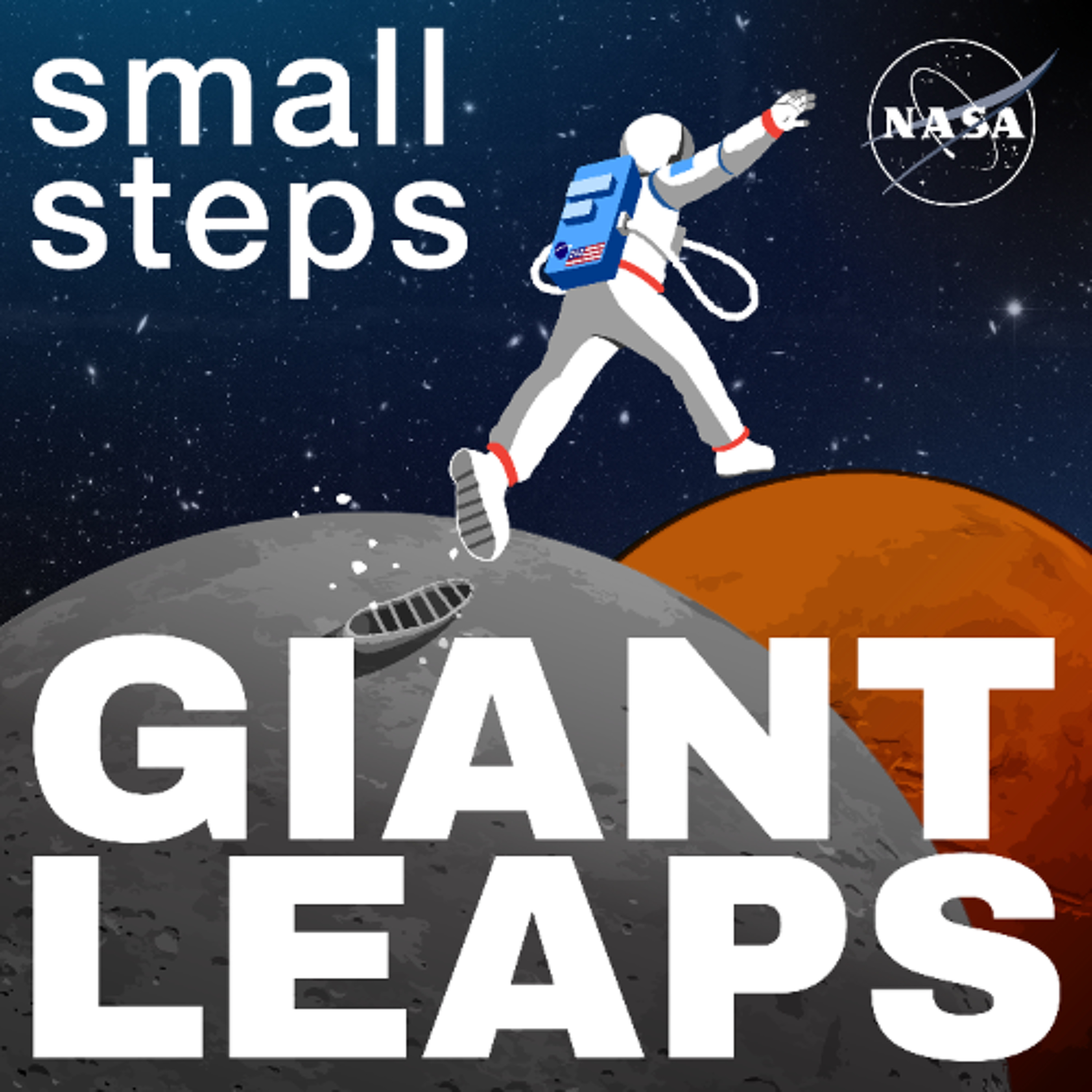Dr. PANKAJ DHUSSA (- Ph.D. & Sc.D. -)
NATIONAL AERONAUTICS AND SPACE ADMINISTRATION NASA
Social
Biography
Industry Expertise
Areas of Expertise
Accomplishments
Asteroseismology
Asteroseismology is the study of the internal structures of stars by means of their intrinsic global oscillations.
https://tess.mit.edu/followup/asteroseismology/
Planetology
This degree focuses on planets, moons, asteroids, and comets, along with geological and geophysical processes in the Solar System.Planetary science (or more rarely, planetology) is the scientific study of planets (including Earth), celestial bodies (such as moons, asteroids, comets) and planetary systems (in particular those of the Solar System) and the processes of their formation.
https://eaps.mit.edu/
Exoplanetology
An exoplanet is any planet beyond our solar system. Most orbit other stars, but free-floating exoplanets, called rogue planets, orbit the galactic center and are untethered to any star.
https://www.space.mit.edu/research/exoplanets/
Exogeology
A planetary science discipline concerned with the geology of the celestial bodies such as the planets and their moons, asteroids, comets, and meteorites.
https://eaps.mit.edu/academic-programs/geology-geochemistry-geobiology/
Astrobiology
Astrobiology is the study of life in the universe. The search for life beyond the Earth requires an understanding of life, and the nature of the environments that support it, as well as planetary, planetary system and stellar interactions and processes.
https://astrobiology.nasa.gov/
iNaturalist
iNaturalist helps you identify the plants and animals around you.
Get connected with a community of over a million scientists and naturalists who can help you learn more about nature! What’s more, by recording and sharing your observations, you’ll create research quality data for scientists working to better understand and protect nature.
iNaturalist is a joint initiative by the
California Academy of Sciences
And
the National Geographic Society.
https://www.inaturalist.org/blog
Education
WhiteSleeves Engish Preparatory School For Juniors
Nursery - To - 4th ( For Juniors )
RSV Higher Secondary School
5th - To - 12th Senior Secondary, School
https://www.facebook.com/RSVHrSec
Maharaja Ganga Singh University
Computers and information technology
Computers and Information Technology
https://www.facebook.com/MGSUBKNR
Massachusetts Institute of Technology (MIT)
Master of Science - Astronomy
Astronomy
https://www.facebook.com/MITnews
Massachusetts Institute of Technology (MIT)
Doctor of Philosophy - Astronomy Ph.D.
Astronomy
https://www.facebook.com/MITnews
Massachusetts Institute of Technology (MIT)
Doctor of Science - Astronomy Sc.D.
Astronomy
https://www.facebook.com/MITnews
Affiliations
- Technology
- Astronomy
- Research & Development
- Innovations
- Futuristic Vision
- Nature
Links
- Behance By Dr.Pankaj Dhussa
- Bing By Dr.Pankaj Dhussa
- California Academy of Sciences By Dr.Pankaj Dhussa
- DataReportal By Dr.Pankaj Dhussa
- Europa Trek By Dr.Pankaj Dhussa
- Global Sea Level Change By Dr.Pankaj Dhussa
- Google Maps By Dr.Pankaj Dhussa
- GoodReads By Dr.Pankaj Dhussa
- NASA Asteroids By Dr.Pankaj Dhussa
- NASA Astromaterials By Dr.Pankaj Dhussa
- NASA Carbon Monitoring System By Dr.Pankaj Dhussa
- NASA Deep Space Network By Dr.Pankaj Dhussa
- NASA Earth Observatory Dr.Pankaj Dhussa
- NASA Earth Dr.Pankaj Dhussa
- NASA EarthData By Dr.Pankaj Dhussa
- NASA-ISRO SAR Mission (NISAR) By Dr.Pankaj Dhussa
- NASA Jet Propulsion Laboratory (JPL) By Dr.Pankaj Dhussa
- NASA Lance Firms By Dr.Pankaj Dhussa
- NASA Moon Observation By Dr.Pankaj Dhussa
- NASA Office of Inspector General By Dr. Pankaj Dhussa
- NASA PACE By Dr.Pankaj Dhussa
- NASA Parker Solar Probe By Dr.Pankaj Dhussa
- NASA Psyche Mission By Dr.Pankaj Dhussa
- NASA Sea Level Change Observations From Space By Dr.Pankaj Dhussa
- NASA Solar System By Dr.Pankaj Dhussa
- NASA Solar System Intactive By Dr.Pankaj Dhussa
- NASA SPHEREx {Spectro-Photometer for the History of the Universe, Epoch of Reionization and Ices Explorer} By Dr.Pankaj Dhussa
- NASA U.S. Sea Level Change By Dr.Pankaj Dhussa
- National Geographic Society By Dr.Pankaj Dhussa
- Podchaser By Dr.Pankaj Dhussa
- Reseacher By Dr.Pankaj Dhussa
- Strava By Dr.Pankaj Dhussa
- Substack By Dr.Pankaj Dhussa
- Twitter By Dr.Pankaj Dhussa
- Waze By Dr.Pankaj Dhussa
- Weather Forecast By Dr.Pankaj Dhussa
Languages
- English
Testimonials
Research Scientist
https://www.nasa.gov/NATIONAL AERONAUTICS AND SPACE ADMINISTRATION
https://sciencecareers.apps.nasa.gov/#/
Media Appearances
NASA Holds Ribbon Cutting for New Earth Information Center
National Aeronautics and Space Administration
2023-06-21
NASA Administrator Bill Nelson led a ribbon cutting ceremony Wednesday to showcase a new Earth Information Center at NASA Headquarters in Washington. The center is part physical space and part virtual experience, which shows how NASA data can improve lives in the face of disasters, environmental challenges, and our changing world.
The agency also launched its corresponding Earth Information Center website as part of the event. The ribbon cutting ceremony comes ahead of a public opening of the center Monday, June 26.
Climate change is a key priority of the Biden-Harris Administration, and NASA plays a critical role in providing data to researchers and others through its extensive Earth-monitoring constellation of satellites. For six decades, NASA satellites, sensors, and scientists have collected observations about our home planet – and at the Earth Information Center, the public can glimpse what this data has taught us about sea level rise, air quality, wildfires, greenhouse gases, energy, and agriculture.
“For more than 60 years, NASA has used our vantage point of space to observe Earth with satellites and instruments aboard the International Space Station to collect vital, life-saving data,” said NASA Administrator Bill Nelson. “To meet the Biden-Harris Administration’s goal of making this data more understandable, accessible, and usable for everyone, NASA is opening the Earth Information Center. From firefighters that rely on NASA data for wildfire management to farmers who need to know when and where to plant crops, the Earth Information Center will help more people make informed decisions every day.”
Whether they live in cities, suburban areas, or on farms, people around the nation can access information to understand our dynamic planet and prepare for impacts of climate change. NASA collects and shares data that can help everyone from coastal including home buyers assessing flood risk; businesses on the Gulf of Mexico and the Great Lakes looking for information on harmful algal blooms; farmers requiring drought and storm information; and county land-use planners assessing wildfire management.
“NASA data powers resources across the U.S. and around the world, helping communities prepare for a changing climate,” said Kate Calvin, NASA’s chief scientist and senior climate advisor, who emceed the ribbon cutting. “The Earth Information Center benefits humanity by providing easily accessible and readily usable Earth information

NASA Welcomes India as 27th Artemis Accords Signatory
National Aeronautics and Space Administration
2023-06-23
During a ceremony at the Willard InterContinental Hotel in Washington on Wednesday, June 21, India became the 27th country to sign the Artemis Accords. NASA Administrator Bill Nelson participated in the signing ceremony for the agency and Taranjit Singh Sandhu, India’s ambassador to the United States, signed on behalf of India.
The Artemis Accords establish a practical set of principles to guide space exploration cooperation among nations, including those participating in NASA’s Artemis program.
“On behalf of NASA, on behalf of President Biden and Vice President Harris, we are very pleased to grow our partnership with India here on Earth and in space,” said Administrator Bill Nelson. “As we venture farther out into the cosmos than ever before, how we go is as important as what we do when we reach our destinations. We want to go in a peaceful way. We want to go in a transparent way. And we want to support each other in times of trouble. We are very grateful for India’s leadership in signing the Artemis Accords and look forward to all that we will accomplish together.”
“India is taking a landmark step in becoming a party to the Artemis Accords, a momentous occasion for our bilateral space cooperation,” said Sandhu. “We reiterate India’s commitment to space exploration underpinned by new levels of cooperation and progress. India is a responsible space power and places the highest importance on the peaceful and sustainable use of outer space. We are confident that the Artemis Accords will advance a rule-based approach to outer space. It also underlines our collective belief that exploration is not just the pursuit of knowledge – of knowing the unknown – but is a catalyst in advancing the betterment of humanity. In that sense, signing of these Accords highlights the evolution of a partnership into one for global good.”
NASA, in coordination with the U.S. Department of State, established the Artemis Accords in 2020 together with seven other founding member nations. The Artemis Accords reinforce and implement key obligations in the 1967 Outer Space Treaty. They also reinforce the commitment by the United States and signatory nations to the Registration Convention, the Rescue and Return Agreement, as well as best practices and norms of responsible behavior that NASA and its partners have supported, including the public release of scientific data.

NASA Journey to a Metal-Rich World: NASA’s Psyche Is Ready to Launch
National Aeronautics and Space Administration
2023-06-13
In less than 24 hours, NASA’s Psyche spacecraft is slated to launch from the agency’s Kennedy Space Center in Florida. With its sights set on a mysterious asteroid of the same name, Psyche is NASA’s first scientific mission to be launched on a SpaceX Falcon Heavy rocket.
Launch is set for 10:19 a.m. EDT on Friday, Oct. 13, with additional opportunities identified each day through Oct. 25. Each opportunity is instantaneous, meaning there is only one exact time per day when launch can occur.
“The team has worked tirelessly to prepare the spacecraft for its journey to a one-of-a-kind asteroid,” said Henry Stone, Psyche’s project manager at NASA’s Jet Propulsion Laboratory in Southern California. “All spacecraft systems, science instruments, and software have been integrated and extensively tested, and the spacecraft is fully configured for flight. We look forward to the launch and – more importantly – to accomplishing the mission’s objectives, marking yet another historic voyage of scientific discovery.”
The orbiter’s solar arrays are folded and stowed for launch. All systems have been tested and re-tested many times, along with the payload of three science instruments. Loaded with 2,392 pounds (1,085 kilograms) of the neutral gas xenon – the propellant that will get Psyche to the asteroid belt – the spacecraft sits inside the launch vehicle’s cone-shaped payload fairing, which protects it from aerodynamic pressure and heat during launch. The spacecraft and fairing have been mated to the SpaceX Falcon Heavy, which is poised for takeoff from Kennedy Space Center’s historic Launch Complex 39A.
Integrated onto the spacecraft is a technology demonstration called Deep Space Optical Communications (DSOC). DSOC will test high-data-rate laser communications – which could be used by future NASA missions – beyond the Moon for the first time. The tech demo will not relay Psyche mission data.

NASA Launches New Climate Mission to Study Ocean, Atmosphere
National Aeronautics and Space Administration
2024-02-08
NASA’s satellite mission to study ocean health, air quality, and the effects of a changing climate for the benefit of humanity launched successfully into orbit at 1:33 a.m. EST Thursday.
Known as PACE, the Plankton, Aerosol, Cloud, ocean Ecosystem satellite, launched aboard a SpaceX Falcon 9 rocket from Space Launch Complex 40 at Cape Canaveral Space Force Station in Florida. NASA confirmed signal acquisition from the satellite about five minutes after launch, and the spacecraft is performing as expected.
“Congratulations to the PACE team on a successful launch. With this new addition to NASA’s fleet of Earth-observing satellites, PACE will help us learn, like never before, how particles in our atmosphere and our oceans can identify key factors impacting global warming,” said NASA Administrator Bill Nelson. “Missions like this are supporting the Biden-Harris Administration’s climate agenda and helping us answer urgent questions about our changing climate.”
From hundreds of miles above Earth, the PACE mission will study the impact of tiny, often invisible things: microscopic life in water and microscopic particles in the air.
The satellite’s hyperspectral ocean color instrument will allow researchers to measure oceans and other waterbodies across a spectrum of ultraviolet, visible, and near-infrared light. This will enable scientists to track the distribution of phytoplankton and – for the first time from space – identify which communities of these organisms are present on daily, global scales. Scientists and coastal resource managers can use the data to help forecast the health of fisheries, track harmful algal blooms, and identify changes in the marine environment.
The spacecraft also carries two polarimeter instruments, Hyper-Angular Rainbow Polarimeter #2 and Spectro-polarimeter for Planetary Exploration. These will detect how sunlight interacts with particles in the atmosphere, giving researchers new information on atmospheric aerosols and cloud properties, as well as air quality at local, regional, and global scales.
With the combination of the instrument and the polarimeters, PACE will provide insights into the interactions of the ocean and atmosphere, and how a changing climate affects these interactions.
NASA imaginAviation 2024 A gateway to Aviation Transformation
National Aeronautics and Space Administration
NASA imaginAviation which will be held virtually February 27 – 29, 2024.
This event is presented by the NASA Transformative Aeronautics Concepts Program (TACP).
This virtual and free event will provide the community an opportunity to experience the latest innovations in NASA Aeronautics through the eyes of TACP’S University Innovation, Convergent Aeronautics Solutions, and the Transformational Tools and Technologies projects.
In addition, this year’s event will also include technology maturation and market infusion potential with support from industry, other government agencies, and NASA Aeronautic programs such as Advanced Air Vehicles, Airspace Operations and Safety, and Integrated Aviation Systems.
NASA LIFTOFF! NASA Astronauts Pilot First Starliner Crewed Test to Station
National Aeronautics and Space Administration
2024-06-05
NASA astronauts Butch Wilmore and Suni Williams are safely in orbit on the first crewed flight test aboard Boeing’s Starliner spacecraft bound for the International Space Station.
As part of NASA’s Boeing Crew Flight Test, the astronauts lifted off at 10:52 a.m. EDT Wednesday on a ULA (United Launch Alliance) Atlas V rocket from Space Launch Complex-41 at Cape Canaveral Space Force Station in Florida on an end-to-end test of the Starliner system.
“Two bold NASA astronauts are well on their way on this historic first test flight of a brand-new spacecraft,” said NASA Administrator Bill Nelson. “Boeing’s Starliner marks a new chapter of American exploration. Human spaceflight is a daring task – but that’s why it’s worth doing. It’s an exciting time for NASA, our commercial partners, and the future of exploration. Go Starliner, Go Butch and Suni!”
As part of NASA’s Commercial Crew Program, the flight test will help validate the transportation system, launch pad, rocket, spacecraft, in-orbit operations capabilities, and return to Earth with astronauts aboard as the agency prepares to certify Starliner for rotational missions to the space station. Starliner previously flew two uncrewed orbital flights, including a test to and from the space station, along with a pad abort demonstration.
“With Starliner’s launch, separation from the rocket, and arrival on orbit, Boeing’s Crew Flight Test is right on track,” said Mark Nappi, vice president and program manager of Boeing’s Commercial Crew Program. “Everyone is focused on giving Suni and Butch a safe, comfortable, ride and performing a successful test mission from start to finish.”
During Starliner’s flight, Boeing will monitor a series of automatic spacecraft maneuvers from its mission control center in Houston. NASA teams will monitor space station operations throughout the flight from the Mission Control Center at the agency’s Johnson Space Center in Houston.
“Flying crew on Starliner represents over a decade of work by the Commercial Crew Program and our partners at Boeing and ULA,” said Steve Stich, manager, Commercial Crew Program, at NASA’s Johnson Space Center in Houston. “For many of us, this is a career-defining moment bringing on a new crew transportation capability for our agency and our nation. We are going to take it one step at a time, putting Starliner through its paces, and remaining vigilant until Butch and Suni safely touch down back on Earth at the conclusion of this test flight.”
NASA Liftoff! NASA’s SpaceX Crew-9 Launches to International Space Station
National Aeronautics and Space Administration
2024-09-28
The two crew members of NASA’s SpaceX Crew-9 mission launched at 1:17 p.m. EDT Saturday, for a science expedition aboard the International Space Station. This is the first human spaceflight mission launched from Space Launch Complex-40 at Cape Canaveral Space Force Station in Florida, and the agency’s ninth commercial crew rotation mission to the space station.
A SpaceX Falcon 9 rocket propelled the Dragon spacecraft into orbit carrying NASA astronaut Nick Hague and Roscosmos cosmonaut Aleksandr Gorbunov. The spacecraft will dock autonomously to the forward-facing port of the station’s Harmony module at approximately 5:30 p.m., Sunday, Sept. 29, where Hague and Gorbunov will join Expedition 72 for a five-month stay aboard the orbiting laboratory.
“This mission required a lot of operational and planning flexibility. I congratulate the entire team on a successful launch today, and godspeed to Nick and Aleksandr as they make their way to the space station,” said NASA Administrator Bill Nelson. “Our NASA wizards and our commercial and international partners have shown once again the success that comes from working together and adapting to changing circumstances without sacrificing the safe and professional operations of the International Space Station.”
During Dragon’s flight, SpaceX will monitor a series of automatic spacecraft maneuvers from its mission control center in Hawthorne, California. NASA will monitor space station operations throughout the flight from the Mission Control Center at the agency’s Johnson Space Center in Houston.
NASA Europa Clipper Begins Journey to Jupiter’s Icy Moon
National Aeronautics and Space Administration
2024-10-14
A SpaceX Falcon Heavy rocket carrying NASA’s Europa Clipper spacecraft lifts off from NASA’s Kennedy Space Center in Florida on Monday, Oct. 14, 2024.
Europa Clipper is the first mission designed to conduct a detailed study of Jupiter’s moon Europa to determine if it currently has habitable conditions. The spacecraft will travel 1.8 billion miles (2.9 billion km) to reach Jupiter in April 2030. It will orbit Jupiter and conduct 49 close flybys of Europa.
NASA SpaceX 31st commercial resupply mission, new scientific experiments and cargo for the agency are bound for the International Space Station
National Aeronautics and Space Administration
2024-11-04
Following a successful launch of NASA’s SpaceX 31st commercial resupply mission, new scientific experiments and cargo for the agency are bound for the International Space Station.
The SpaceX Dragon spacecraft, carrying more than 6,000 pounds of supplies to the orbiting laboratory, lifted off at 9:29 p.m. EST Monday, on the company’s Falcon 9 rocket from Launch Complex 39A at NASA’s Kennedy Space Center in Florida.
NASA Liftoff! NASA Sends Science, Tech to Moon on Firefly, SpaceX Flight
National Aeronautics and Space Administration
2025-01-15
A suite of NASA scientific investigations and technology demonstrations is on its way to our nearest celestial neighbor aboard a commercial spacecraft, where they will provide insights into the Moon’s environment and test technologies to support future astronauts landing safely on the lunar surface under the agency’s Artemis campaign.
Carrying science and tech on Firefly Aerospace’s first CLPS or Commercial Lunar Payload Services flight for NASA, Blue Ghost Mission 1 launched at 1:11 a.m. EST aboard a SpaceX Falcon 9 rocket from Launch Complex 39A at the agency’s Kennedy Space Center in Florida. The company is targeting a lunar landing on Sunday, March 2.
“This mission embodies the bold spirit of NASA’s Artemis campaign – a campaign driven by scientific exploration and discovery,” said NASA Deputy Administrator Pam Melroy. “Each flight we’re part of is vital step in the larger blueprint to establish a responsible, sustained human presence at the Moon, Mars, and beyond. Each scientific instrument and technology demonstration brings us closer to realizing our vision. Congratulations to the NASA, Firefly, and SpaceX teams on this successful launch.”
Once on the Moon, NASA will test and demonstrate lunar drilling technology, regolith (lunar rocks and soil) sample collection capabilities, global navigation satellite system abilities, radiation tolerant computing, and lunar dust mitigation methods. The data captured could also benefit humans on Earth by providing insights into how space weather and other cosmic forces impact our home planet.
As part of NASA’s modern lunar exploration activities, CLPS deliveries to the Moon will help humanity better understand planetary processes and evolution, search for water and other resources, and support long-term, sustainable human exploration of the Moon in preparation for the first human mission to Mars.
NASA Liftoff! NASA Tech, Science En Route to Moon with Intuitive Machines
National Aeronautics and Space Administration
2025-02-27
Creating a golden streak in the night sky, a SpaceX Falcon 9 rocket carrying Intuitive Machines’ Nova-C lunar lander (IM-2) and NASA’s Lunar Trailblazer soars upward after liftoff from Launch Complex 39A at NASA’s Kennedy Space Center in Florida at 7:16 p.m. EST, Wednesday, Feb. 26. The IM-2 launch, which is part of NASA’s CLPS (Commercial Lunar Payload Services) initiative, is carrying NASA technology and science demonstrations, and other commercial payloads to Mons Mouton, a lunar plateau to advance our understanding of the Moon and planetary processes, while paving the way for future crewed missions.
The next set of NASA science and technology demonstrations is on its way to the lunar surface, where they will gather data about Earth’s nearest neighbor and help pave the way for American astronauts to explore the Moon and beyond, for the benefit of all.
Carrying NASA instruments as part of the agency’s CLPS (Commercial Lunar Payload Services) initiative and Artemis campaign, Intuitive Machines’ IM-2 mission launched at 7:16 p.m. EST, Feb. 26, aboard a SpaceX Falcon 9 rocket from Launch Complex 39A at the agency’s Kennedy Space Center in Florida. Intuitive Machines’ lunar lander is scheduled to touch down on Thursday, March 6, in Mons Mouton, a plateau in the Moon’s South Pole.
“With each CLPS mission, the United States is leading the way in expanding our reach and refining our capabilities, turning what was once dreams into reality,” said NASA acting Administrator Janet Petro. “These science and technology demonstrations are more than payloads – they represent the foundation for future explorers who will live and work on the Moon. By partnering with American industry, we are driving innovation, strengthening our leadership in space, and preparing for sending humans farther into the solar system, including Mars.”
Once on the Moon, the NASA CLPS investigations will aim to measure the potential presence of volatiles or gases from lunar soil – one of the first on-site demonstrations of resource use on the Moon. In addition, a passive Laser Retroreflector Array on the top deck of the lander will bounce laser light back at any future orbiting or incoming spacecraft to give them a permanent reference point on the lunar surface. Other technology instruments on this delivery will demonstrate a robust surface communications system and deploy a propulsive drone designed to hop across the lunar surface.
NASA Launches Missions to Study Sun, Universe’s Beginning
National Aeronautics and Space Administration
2025-03-12
NASA’s newest astrophysics observatory, SPHEREx, is on its way to study the origins of our universe and the history of galaxies, and to search for the ingredients of life in our galaxy. Short for Spectro-Photometer for the History of the Universe, Epoch of Reionization and Ices Explorer, SPHEREx lifted off at 8:10 p.m. PDT on March 11 aboard a SpaceX Falcon 9 rocket from Space Launch Complex 4 East at Vandenberg Space Force Base in California.
Riding with SPHEREx aboard the Falcon 9 were four small satellites that make up the agency’s PUNCH (Polarimeter to Unify the Corona and Heliosphere) mission, which will study how the Sun’s outer atmosphere becomes the solar wind.
“Everything in NASA science is interconnected, and sending both SPHEREx and PUNCH up on a single rocket doubles the opportunities to do incredible science in space,” said Nicky Fox, associate administrator, Science Mission Directorate at NASA Headquarters in Washington. “Congratulations to both mission teams as they explore the cosmos from far-out galaxies to our neighborhood star. I am excited to see the data returned in the years to come.”
Ground controllers at NASA’s Jet Propulsion Laboratory in Southern California, which manages SPHEREx, established communications with the space observatory at 9:31 p.m. PDT. The observatory will begin its two-year prime mission after a roughly one-month checkout period, during which engineers and scientists will make sure the spacecraft is working properly.
The PUNCH satellites successfully separated about 53 minutes after launch, and ground controllers have established communication with all four PUNCH spacecraft. Now, PUNCH begins a 90-day commissioning period where the four satellites will enter the correct orbital formation, and the instruments will be calibrated as a single “virtual instrument” before the scientists start to analyze images of the solar wind.
NASA Liftoff! NASA’s SpaceX Crew-10 Launches From Kennedy Space Center
National Aeronautics and Space Administration
2025-03-14
NASA’s SpaceX Crew-10 mission lifted off at 7:03 p.m. EDT from Launch Complex 39A at the agency’s Kennedy Space Center in Florida.
NASA astronauts Anne McClain, commander, and Nichole Ayers, pilot, along with mission specialists JAXA (Japan Aerospace Exploration Agency) astronaut Takuya Onishi and Roscosmos cosmonaut Kirill Peskov, are experiencing 2 g while SpaceX’s Dragon spacecraft and Falcon 9 rocket go through a rapid succession of events.
It will take about 28.5 hours for the spacecraft to autonomously dock to the space station at 11:30 p.m. EDT Saturday, March 15, while traveling 17,000 mph orbiting the Earth.
Coming up next, the nine Merlin engines on Falcon 9’s first stage will burn through one million pounds of propellant during the next three minutes.
NASA’s EZIE (Electrojet Zeeman Imaging Explorer) Launches on Mission to Study Earth’s Electrojets
National Aeronautics and Space Administration
2025-03-14
Under the nighttime California sky, NASA’s EZIE (Electrojet Zeeman Imaging Explorer) mission launched aboard a SpaceX Falcon 9 rocket at 11:43 p.m. PDT on March 14.
Taking off from Vandenberg Space Force Base near Santa Barbara, the EZIE mission’s trio of small satellites will fly in a pearls-on-a-string configuration approximately 260 to 370 miles above Earth’s surface to map the auroral electrojets, powerful electric currents that flow through our upper atmosphere in the polar regions where auroras glow in the sky.
At approximately 2 a.m. PDT on March 15, the EZIE satellites were successfully deployed. Within the next 10 days, the spacecraft will send signals to verify they are in good health and ready to embark on their 18-month mission.
“NASA has leaned into small missions that can provide compelling science while accepting more risk. EZIE represents excellent science being executed by an excellent team, and it is delivering exactly what NASA is looking for,” said Jared Leisner, program executive for EZIE at NASA Headquarters in Washington.
NASA SpaceX 32nd commercial resupply mission, new scientific experiments and cargo for the agency are bound for the International Space Station
National Aeronautics and Space Administration
2025-04-21
Following the successful launch of NASA’s SpaceX 32nd Commercial Resupply Services mission, new scientific experiments and supplies are bound for the International Space Station.
The SpaceX Dragon spacecraft, carrying approximately 6,700 pounds of cargo to the orbiting laboratory for NASA, lifted off at 4:15 a.m. EDT Monday, on the company’s Falcon 9 rocket from Launch Complex 39A at NASA’s Kennedy Space Center in Florida.
Live coverage of the spacecraft’s arrival will begin at 6:45 a.m., Tuesday, April 22, on NASA+. Learn how to watch NASA content through a variety of platforms.
The spacecraft is scheduled to autonomously dock at approximately 8:20 a.m. to the zenith, or space-facing, port of the space station’s Harmony module.
The resupply mission will support dozens of research experiments during Expedition 73. Along with food and essential equipment for the crew, Dragon is delivering a variety of science experiments, including a demonstration of refined maneuvers for free-floating robots. Dragon also carries an enhanced air quality monitoring system that could help protect crew members on exploration missions to the Moon and Mars, and two atomic clocks to examine fundamental physics concepts, such as relativity, and test global synchronization of precision timepieces.
These are just a sample of the hundreds of investigations conducted aboard the orbiting laboratory each year in the areas of biology and biotechnology, physical sciences, and Earth and space science. Such research benefits humanity and helps lay the groundwork for future human exploration through the agency’s Artemis campaign, which will send astronauts to the Moon to prepare for future missions to Mars.
The Dragon spacecraft is scheduled to remain at the orbiting laboratory until May, when it will depart and return to Earth with time-sensitive research and cargo, splashing down off the coast of California.
Style
Research Focus
NASA’s imaginAviation A gateway to Aviation Transformation
imaginAviation 2023
2023-02-27
NASA’s imaginAviation 2023
A gateway to Aviation Transformation
February 28 - March 2, 2023
NASA’s second annual imaginAviation which will be held virtually February 28 – March 2, 2023. This event is presented by the NASA Transformative Aeronautics Concepts Program (TACP).
This virtual and free event will provide the community an opportunity to experience the latest innovations in NASA Aeronautics through the eyes of TACP’S University Innovation, Convergent Aeronautics Solutions, and the Transformational Tools and Technologies projects.
In addition, this year’s event will also include technology maturation and market infusion potential with support from industry, other government agencies, and NASA Aeronautic programs such as Advanced Air Vehicles, Airspace Operations and Safety, and Integrated Aviation Systems.
An experience like none other.
Join NASA’s aviation community of bright minds and pioneers at the imaginAviation three-day virtual event focusing on the future transformation of aviation! Learn about the NASA Aeronautics projects and technologies that are building a better future for all.
Come take a glimpse into the future of aviation as you learn how NASA Aeronautics discovers, catalyzes and advances new innovative technologies into the community.
Hosted Virtually
What we accomplish
Networking
Engage in real-time with industry leaders and NASA subject matter experts.
Transformation
Listen to invigorating and inspiring talks on how we can transform the future of aviation.
STEM Engagement
Learn about NASA STEM engagement with K-12 and University students.
Innovation
Gain technology insights and much more!

iNaturalist
iNaturalist
Connect with Nature!
iNaturalist helps you identify the plants and animals around you. Get connected with a community of over a million scientists and naturalists who can help you learn more about nature! What’s more, by recording and sharing your observations, you’ll create research quality data for scientists working to better understand and protect nature.
iNaturalist is a joint initiative by the
California Academy of Sciences and
National Geographic Society.

The Artemis II Astronauts Podcast
Artemis II Astronauts
2023-04-06
NASA
National Aeronautics and Space Administration
The Artemis II Astronauts
From Earth orbit to the Moon and Mars, explore the world of human spaceflight with NASA each week on the official podcast of the Johnson Space Center in Houston, Texas.
Listen to in-depth conversations with the astronauts, scientists and engineers who make it possible.
The Artemis II astronauts discuss their past, present, and what they are looking forward to on their future mission to the Moon.

NASA's Transiting Exoplanet Survey Satellite (TESS)
TESS
2023-04-18
Five years ago today, NASA's Transiting Exoplanet Survey Satellite (TESS) mission was launched in search of planets outside our solar system, and boy did it succeed. Happy launch anniversary TESS!

NASA Earth Day 2023
Earth Day 2023
2023-04-20
NASA Earth Day 2023
DISCOVER THE WORLD AROUND YOU

The Entire History of NASA
History Of NASA
2023-04-28
From Earth orbit to the Moon and Mars, explore the world of human spaceflight with NASA each week on the official podcast of the Johnson Space Center in Houston, Texas. Listen to in-depth conversations with the astronauts, scientists and engineers who make it possible.
On Episode 286, former NASA chief historian discusses his new e-book that shares some of the most significant moments and programs from NASA’s entire history.

NASA Science in a Spacesuit
Science in a Spacesuit
2023-05-03
From Earth orbit to the Moon and Mars, explore the world of human spaceflight with NASA each week on the official podcast of the Johnson Space Center in Houston, Texas.
Listen to in-depth conversations with the astronauts, scientists and engineers who make it possible.
On Episode 287, a NASA expert details an upcoming space station study conducted during a spacewalk to better understand potential contaminants for future human exploration of the Moon and Mars.
NASA Evolving Artemis Mission Operations
Evolving Artemis Mission Operations
2023-05-10
From Earth orbit to the Moon and Mars, explore the world of human spaceflight with NASA each week on the official podcast of the Johnson Space Center in Houston, Texas.
Listen to in-depth conversations with the astronauts, scientists and engineers who make it possible.
On Episode 288, Artemis II lead flight directors walk us through what was learned from Artemis I and what we are doing right now in Mission Control to prepare for Artemis II and beyond.

NASA Lucy
Lucy
2023-05-19
From Earth orbit to the Moon and Mars, explore the world of human spaceflight with NASA each week on the official podcast of the Johnson Space Center in Houston, Texas.
Listen to in-depth conversations with the astronauts, scientists and engineers who make it possible.
On Episode 289, the Principal Investigator for NASA’s Lucy mission discusses the spacecraft’s 12-year journey to eight different asteroids as we look to better understand the formation of our solar system.

NASA Preparing Humans for Longer Spaceflights
Preparing Humans for Longer Spaceflights
2023-05-26
From Earth orbit to the Moon and Mars, explore the world of human spaceflight with NASA each week on the official podcast of the Johnson Space Center in Houston, Texas.
Listen to in-depth conversations with the astronauts, scientists and engineers who make it possible.
On Episode 290, three NASA human research experts discuss CIPHER, the first study integrating multiple physiological and psychological measures to assess how extended durations in space change the human body.

NASA Improving Precision Neuroscience
Improving Precision Neuroscience
2023-06-02
From Earth orbit to the Moon and Mars, explore the world of human spaceflight with NASA each week on the official podcast of the Johnson Space Center in Houston, Texas.
Listen to in-depth conversations with the astronauts, scientists and engineers who make it possible.
On Episode 291, co-principal investigator for a neuroscience experiment launching to the space station on Northrop Grumman CRS-19 cargo mission walks us through the goals of the experiment and how it might benefit patients back on Earth.

NASA Students and Space Genes
Students and Space Genes
2023-06-09
From Earth orbit to the Moon and Mars, explore the world of human spaceflight with NASA each week on the official podcast of the Johnson Space Center in Houston, Texas.
Listen to in-depth conversations with the astronauts, scientists and engineers who make it possible.
On episode 292, the co-founder of the “Genes in Space” program joins the 2022 student winner to discuss this competition that allows students across the country to design an experiment for the International Space Station.

NASA Deep Space Hydration
Deep Space Hydration
2023-06-16
From Earth orbit to the Moon and Mars, explore the world of human spaceflight with NASA each week on the official podcast of the Johnson Space Center in Houston, Texas.
Listen to in-depth conversations with the astronauts, scientists and engineers who make it possible.
On episode 293, experts at NASA's Johnson Space Center discuss the new potable water dispenser that will soon be tested on the space station for future Artemis missions into deep space.

NASA The Moon in 4K
The Moon in 4K
2023-06-23
From Earth orbit to the Moon and Mars, explore the world of human spaceflight with NASA each week on the official podcast of the Johnson Space Center in Houston, Texas.
Listen to in-depth conversations with the astronauts, scientists and engineers who make it possible.
On episode 294, a project lead at NASA walks us through a new laser communication system that will be tested on the Artemis II mission to the Moon to drastically increase deep space data rates.

NASA A Year on Mars
A Year on Mars
2023-06-30
From Earth orbit to the Moon and Mars, explore the world of human spaceflight with NASA each week on the official podcast of the Johnson Space Center in Houston, Texas.
Listen to in-depth conversations with the astronauts, scientists and engineers who make it possible.
On episode 295, hear from the deputy project manager for NASA’s CHAPEA project as well as the volunteer crew of four who joined us a few days before entering the Mars simulated habitat for one year.

NASA Advanced Rocket Engines
Advanced Rocket Engines
2023-07-07
From Earth orbit to the Moon and Mars, explore the world of human spaceflight with NASA each week on the official podcast of the Johnson Space Center in Houston, Texas.
Listen to in-depth conversations with the astronauts, scientists and engineers who make it possible.
On episode 296, we are joined by rocket scientists who discuss a new revolutionary rocket engine design tested at NASA’s Marshall Spaceflight Center last year.

NASA Moon to Mars Architecture
Moon to Mars Architecture
2023-07-14
From Earth orbit to the Moon and Mars, explore the world of human spaceflight with NASA each week on the official podcast of the Johnson Space Center in Houston, Texas.
Listen to in-depth conversations with the astronauts, scientists and engineers who make it possible.
On episode 297, Deputy Associate Administrator for the Exploration Systems Development Mission Directorate at NASA joins us this week to discuss future architecture plans for Moon to Mars missions.

NASA From Saskatchewan to Space
From Saskatchewan to Space
2023-07-21
From Earth orbit to the Moon and Mars, explore the world of human spaceflight with NASA each week on the official podcast of the Johnson Space Center in Houston, Texas.
Listen to in-depth conversations with the astronauts, scientists and engineers who make it possible.
On episode 298, RADSAT-SK Technical Project manager and president of the University of Saskatchewan Space Design Team walk us through the ins and outs of the first satellite from Saskatchewan recently deployed from the space station.

NASA Their Paths to Gateway
Their Paths to Gateway
2023-07-28
From Earth orbit to the Moon and Mars, explore the world of human spaceflight with NASA each week on the official podcast of the Johnson Space Center in Houston, Texas.
Listen to in-depth conversations with the astronauts, scientists and engineers who make it possible.
On episode 299, hear from new Gateway leaders who give us an update on the lunar outpost for future Artemis missions to the Moon.

NASA Low Earth Orbit 2030: A Live Recording of Episode 300
Low Earth Orbit 2030: A Live Recording of Episode 300
2023-07-04
From Earth orbit to the Moon and Mars, explore the world of human spaceflight with NASA each week on the official podcast of the Johnson Space Center in Houston, Texas.
Listen to in-depth conversations with the astronauts, scientists and engineers who make it possible.
On episode 300, we recorded this podcast in front of a live audience at Space Center Houston! We were joined by four special guests, who walk us through the future of a human presence in Low Earth Orbit, before opening the conversation up to an audience Q&A.

NASA Crew-7
Crew-7
2023-08-09
From Earth orbit to the Moon and Mars, explore the world of human spaceflight with NASA each week on the official podcast of the Johnson Space Center in Houston, Texas.
Listen to in-depth conversations with the astronauts, scientists and engineers who make it possible.
On episode 301, hear from the Crew-7 cadre ahead of their launch to the International Space Station.

NASA Safety Culture
NASA Safety Culture
2023-08-26
From Earth orbit to the Moon and Mars, explore the world of human spaceflight with NASA each week on the official podcast of the Johnson Space Center in Houston, Texas.
Listen to in-depth conversations with the astronauts, scientists and engineers who make it possible.
On episode 302, hear from Johnson Space Center’s Safety and Mission Assurance Director who describes NASA’s safety culture today and how it has evolved over time.

NASA Mars Audio Log #1
Mars Audio Log #1
2023-09-01
From Earth orbit to the Moon and Mars, explore the world of human spaceflight with NASA each week on the official podcast of the Johnson Space Center in Houston, Texas.
Listen to in-depth conversations with the astronauts, scientists and engineers who make it possible.
On episode 303, hear from the CHAPEA crew and the principal investigator as they give us an update on how life has been in the simulated Mars habitat.

NASA We Have an Astronaut
We Have an Astronaut
2023-09-08
From Earth orbit to the Moon and Mars, explore the world of human spaceflight with NASA each week on the official podcast of the Johnson Space Center in Houston, Texas.
Listen to in-depth conversations with the astronauts, scientists and engineers who make it possible.
On episode 304, hear from NASA astronaut Loral O’Hara ahead of her launch to the International Space Station.

NASA The Flight Directors' Flight Director
The Flight Directors' Flight Director
2023-09-15
From Earth orbit to the Moon and Mars, explore the world of human spaceflight with NASA each week on the official podcast of the Johnson Space Center in Houston, Texas.
Listen to in-depth conversations with the astronauts, scientists and engineers who make it possible.
On episode 305, hear from chief flight director Emily Nelson as she discusses her journey to NASA and what it takes to lead teams inside Mission Control Houston.

NASA Return of OREx: Part II
Return of OREx: Part II
2023-09-23
From Earth orbit to the Moon and Mars, explore the world of human spaceflight with NASA each week on the official podcast of the Johnson Space Center in Houston, Texas.
Listen to in-depth conversations with the astronauts, scientists and engineers who make it possible.
On episode 306, curation experts at the Johnson Space Center discuss what happens to the asteroid samples after OSIRIS-REx lands in Utah on Sunday, Sept. 24.

NASA Psyche
Psyche
2023-10-29
From Earth orbit to the Moon and Mars, explore the world of human spaceflight with NASA each week on the official podcast of the Johnson Space Center in Houston, Texas.
Listen to in-depth conversations with the astronauts, scientists and engineers who make it possible.
On episode 307, Psyche’s principal investigator Lindy Elkins-Tanton walks us through the ins and outs of the mission to a metal-rich asteroid.

NASA Mars Audio Log #2
Mars Audio Log #2
2023-10-06
From Earth orbit to the Moon and Mars, explore the world of human spaceflight with NASA each week on the official podcast of the Johnson Space Center in Houston, Texas.
Listen to in-depth conversations with the astronauts, scientists and engineers who make it possible.
On episode 308, the CHAPEA crew gives an update on how life has been in the simulated Mars habitat for their one-year stay, and a human research expert discusses the virtual reality spacewalks within the analog. This is the second audio log of a monthly series.

NASA Valkyrie
Valkyrie
2023-10-13
From Earth orbit to the Moon and Mars, explore the world of human spaceflight with NASA each week on the official podcast of the Johnson Space Center in Houston, Texas.
Listen to in-depth conversations with the astronauts, scientists and engineers who make it possible.
On episode 309, Johnson’s deputy team lead of dexterous robots Evan Laske describes the design and ambitions of the humanoid robot Valkyrie.

NASA Advancing Technologies
Advancing Technologies
2023-10-20
From Earth orbit to the Moon and Mars, explore the world of human spaceflight with NASA each week on the official podcast of the Johnson Space Center in Houston, Texas.
Listen to in-depth conversations with the astronauts, scientists and engineers who make it possible.
On episode 310, NASA Innovative Advanced Concepts leaders Mike LaPointe and John Nelson discuss unique and interesting solutions to complex spaceflight challenges.

NASA Mars Audio Log #3
Mars Audio Log #3
2023-10-27
From Earth orbit to the Moon and Mars, explore the world of human spaceflight with NASA each week on the official podcast of the Johnson Space Center in Houston, Texas.
Listen to in-depth conversations with the astronauts, scientists and engineers who make it possible.
On episode 311, the CHAPEA crew gives an update in their third month of a one-year stay in a simulated Mars habitat, and Dr. Scott Smith discusses the crew’s nutritional needs for the analog mission. This is the third audio log of a monthly series.

NASA Plant Water Management
Plant Water Management
2023-11-03
From Earth orbit to the Moon and Mars, explore the world of human spaceflight with NASA each week on the official podcast of the Johnson Space Center in Houston, Texas.
Listen to in-depth conversations with the astronauts, scientists and engineers who make it possible.
On episode 312, principal investigator Mark Weislogel discusses science being sent to the station aboard the SpaceX CRS-29 cargo resupply mission to improve plant growth in space.

NASA Laser Communications
Laser Communications
2023-11-09
From Earth orbit to the Moon and Mars, explore the world of human spaceflight with NASA each week on the official podcast of the Johnson Space Center in Houston, Texas.
Listen to in-depth conversations with the astronauts, scientists and engineers who make it possible.
On episode 313, space communication and navigation expert Jason Mitchell discusses laser communications and the ongoing work to understand what future deep space and near space missions might need.

NASA Mars Audio Log #4
Mars Audio Log #4
2023-12-01
From Earth orbit to the Moon and Mars, explore the world of human spaceflight with NASA each week on the official podcast of the Johnson Space Center in Houston, Texas.
Listen to in-depth conversations with the astronauts, scientists and engineers who make it possible.
On episode 314, the CHAPEA crew gives an update amid their one-year stay in a simulated Mars habit, and Gioia Massa discusses the crop production on Mars.
This is the fourth audio log of a monthly series.

NASA Space Biology
Space Biology
2023-12-08
From Earth orbit to the Moon and Mars, explore the world of human spaceflight with NASA each week on the official podcast of the Johnson Space Center in Houston, Texas.
Listen to in-depth conversations with the astronauts, scientists and engineers who make it possible.
On episode 315, NASA scientist Dr. Sharmila Bhattacharya describes how space biology research can contribute to significant scientific and technological advancements that not only enable space exploration for future long-duration space missions, but also benefits life on Earth.

NASA Mars Audio Log #5
Mars Audio Log #5
2023-12-15
From Earth orbit to the Moon and Mars, explore the world of human spaceflight with NASA each week on the official podcast of the Johnson Space Center in Houston, Texas.
Listen to in-depth conversations with the astronauts, scientists and engineers who make it possible.
On episode 316, the CHAPEA crew gives an update in their fifth month of a one-year stay in a simulated Mars habitat and Dr. Suzanne Bell discusses behavioral health and performance of the analog mission. This is the fifth audio log of a monthly series.

NASA Peregrine Mission One
Peregrine Mission One
2024-01-05
From Earth orbit to the Moon and Mars, explore the world of human spaceflight with NASA each week on the official podcast of the Johnson Space Center in Houston, Texas.
Listen to in-depth conversations with the astronauts, scientists and engineers who make it possible.
On episode 317, the CEO of Astrobotic and NASA Deputy Manager for CLPS (Commercial Lunar Payload Services) discuss Peregrine Mission One ahead of its launch and landing on the lunar surface.

NASA Axiom Mission 3
Axiom Mission 3
2024-01-12
From Earth orbit to the Moon and Mars, explore the world of human spaceflight with NASA each week on the official podcast of the Johnson Space Center in Houston, Texas.
Listen to in-depth conversations with the astronauts, scientists and engineers who make it possible.
On episode 318, Michael Lopez-Alegria, former NASA astronaut and current commander of Axiom Mission 3, discusses his career and the upcoming private astronaut mission to the International Space Station.

NASA Return of OREx: Part III
Return of OREx: Part III
2024-01-19
From Earth orbit to the Moon and Mars, explore the world of human spaceflight with NASA each week on the official podcast of the Johnson Space Center in Houston, Texas.
Listen to in-depth conversations with the astronauts, scientists and engineers who make it possible.
On episode 319, planetary scientists and OSIRIS-REx co-investigators at NASA’s Johnson Space Center walk us through the processes and emotions of working in the lab with asteroid Bennu’s precious samples.
NASA Mars Audio Log #6
Mars Audio Log #6
2024-01-26
From Earth orbit to the Moon and Mars, explore the world of human spaceflight with NASA each week on the official podcast of the Johnson Space Center in Houston, Texas.
Listen to in-depth conversations with the astronauts, scientists and engineers who make it possible.
On episode 320, the CHAPEA crew gives an update as they hit their halfway mark of their yearlong mission, and human performance scientists discuss exercising in a simulated Mars habitat.
NASA Where to Land on the Moon
Where to Land on the Moon
2024-02-02
From Earth orbit to the Moon and Mars, explore the world of human spaceflight with NASA each week on the official podcast of the Johnson Space Center in Houston, Texas.
Listen to in-depth conversations with the astronauts, scientists and engineers who make it possible.
On episode 321, NASA experts discuss the considerations when looking at landing locations for future human missions to the Moon’s surface.
NASA IM-1
IM-1
2024-02-09
From Earth orbit to the Moon and Mars, explore the world of human spaceflight with NASA each week on the official podcast of the Johnson Space Center in Houston, Texas.
Listen to in-depth conversations with the astronauts, scientists and engineers who make it possible.
On episode 322, NASA and Intuitive Machines experts discuss the science and operations behind the IM-1 mission ahead of its journey to land on the Moon’s surface.
NASA Crew-8
Crew-8
2024-03-16
From Earth orbit to the Moon and Mars, explore the world of human spaceflight with NASA each week on the official podcast of the Johnson Space Center in Houston, Texas.
Listen to in-depth conversations with the astronauts, scientists and engineers who make it possible.
On episode 323, the Crew-8 cadre discusses their backgrounds ahead of their launch to the International Space Station.
NASA Mars Audio Log #7
Mars Audio Log #7
2024-03-23
From Earth orbit to the Moon and Mars, explore the world of human spaceflight with NASA each week on the official podcast of the Johnson Space Center in Houston, Texas.
Listen to in-depth conversations with the astronauts, scientists and engineers who make it possible.
On episode 324, the CHAPEA crew checks in on their seventh month in a Mars simulated habitat and NASA experts discuss the impacts that spaceflight has on astronauts’ health.
NASA Astronaut Graduation 2024
Astronaut Graduation 2024
2024-03-01
From Earth orbit to the Moon and Mars, explore the world of human spaceflight with NASA each week on the official podcast of the Johnson Space Center in Houston, Texas.
Listen to in-depth conversations with the astronauts, scientists and engineers who make it possible.
On episode 325, the 2021 class of astronaut candidates, known as “The Flies,” is graduating after two years of rigorous training. Each of the Flies discuss their training and what they are looking forward to as an astronaut in the Artemis generation.
NASA So You Want to be an Astronaut?
So You Want to be an Astronaut?
2024-03-05
From Earth orbit to the Moon and Mars, explore the world of human spaceflight with NASA each week on the official podcast of the Johnson Space Center in Houston, Texas.
Listen to in-depth conversations with the astronauts, scientists and engineers who make it possible.
On episode 325.5, NASA is looking to recruit the next class of astronauts, and applications are open! The manager of NASA astronaut selection discusses the selection process and how to apply to an out-of-this-world career.
NASA Podcast in a Vacuum Chamber
Podcast in a Vacuum Chamber
2024-03-08
From Earth orbit to the Moon and Mars, explore the world of human spaceflight with NASA each week on the official podcast of the Johnson Space Center in Houston, Texas.
Listen to in-depth conversations with the astronauts, scientists and engineers who make it possible.
On episode 326, NASA experts discuss VIPER’s vacuum chamber testing in preparation for a south pole lunar landing from inside of NASA Johnson’s Chamber A.
NASA Electrician to Astronaut
Electrician to Astronaut
2024-03-15
From Earth orbit to the Moon and Mars, explore the world of human spaceflight with NASA each week on the official podcast of the Johnson Space Center in Houston, Texas.
Listen to in-depth conversations with the astronauts, scientists and engineers who make it possible.
On episode 327, NASA astronaut Tracy C. Dyson discusses her background and anticipation as she looks ahead to the beginning of her third spaceflight later this month.
NASA VIPER
VIPER
2024-03-22
From Earth orbit to the Moon and Mars, explore the world of human spaceflight with NASA each week on the official podcast of the Johnson Space Center in Houston, Texas.
Listen to in-depth conversations with the astronauts, scientists and engineers who make it possible.
On episode 328, learn more about NASA’s first robotic lunar rover, the Volatiles Investigating Polar Exploration Rover, also known as VIPER, and its journey to the lunar surface.
NASA Mars Audio Log #8
Mars Audio Log #8
2024-03-29
From Earth orbit to the Moon and Mars, explore the world of human spaceflight with NASA each week on the official podcast of the Johnson Space Center in Houston, Texas.
Listen to in-depth conversations with the astronauts, scientists and engineers who make it possible.
On episode 329, the CHAPEA crew checks in on their eighth month in a Mars simulated habitat and a NASA biostatistician discusses the process of analysis, interpretation, and presentation of scientific data.
NASA Eclipse Across North America 2024
Eclipse Across North America 2024
2024-04-05
From Earth orbit to the Moon and Mars, explore the world of human spaceflight with NASA each week on the official podcast of the Johnson Space Center in Houston, Texas.
Listen to in-depth conversations with the astronauts, scientists and engineers who make it possible.
On episode 330, a NASA flight controller discusses all you need to know about the total solar eclipse happening on April 8, how to best witness it, and the safety precautions that come with it.
NASA Crew Flight Test: The Mission
Crew Flight Test: The Mission
2024-04-12
From Earth orbit to the Moon and Mars, explore the world of human spaceflight with NASA each week on the official podcast of the Johnson Space Center in Houston, Texas.
Listen to in-depth conversations with the astronauts, scientists and engineers who make it possible.
On episode 331, flight directors discuss NASA’s Boeing Crew Flight Test and the operations behind this historic mission.
NASA Crew Flight Test: The Astronauts
Crew Flight Test: The Astronauts
2024-04-19
From Earth orbit to the Moon and Mars, explore the world of human spaceflight with NASA each week on the official podcast of the Johnson Space Center in Houston, Texas.
Listen to in-depth conversations with the astronauts, scientists and engineers who make it possible.
On episode 332, NASA’s Boeing Crew Flight Test Commander Butch Wilmore and Pilot Suni Williams discuss their astronaut journeys and preparation to be the first humans to fly Starliner.
NASA Mars Audio Log #9
Mars Audio Log #9
2024-04-26
From Earth orbit to the Moon and Mars, explore the world of human spaceflight with NASA each week on the official podcast of the Johnson Space Center in Houston, Texas.
Listen to in-depth conversations with the astronauts, scientists and engineers who make it possible.
On episode 333, the CHAPEA crew checks in on their ninth month in a Mars simulated habitat, and a Mars architecture expert explains CHAPEA’s role in NASA’s long-term plans to explore the Red Planet. This is the ninth audio log of a monthly series.
NASA Atmospheric Waves
Atmospheric Waves
2024-05-03
From Earth orbit to the Moon and Mars, explore the world of human spaceflight with NASA each week on the official podcast of the Johnson Space Center in Houston, Texas.
Listen to in-depth conversations with the astronauts, scientists and engineers who make it possible.
On episode 334, a principal investigator talks about an experiment on board the space station observing the forces that drive space weather.
NASA Small Payloads, Big Science
Small Payloads, Big Science
2024-05-10
From Earth orbit to the Moon and Mars, explore the world of human spaceflight with NASA each week on the official podcast of the Johnson Space Center in Houston, Texas.
Listen to in-depth conversations with the astronauts, scientists and engineers who make it possible.
On episode 335, a nanosatellites expert explains the process of how CubeSats are selected, scheduled for launch, and eventually deployed from the International Space Station.
NASA H-3PO
H-3PO
2024-05-17
From Earth orbit to the Moon and Mars, explore the world of human spaceflight with NASA each week on the official podcast of the Johnson Space Center in Houston, Texas.
Listen to in-depth conversations with the astronauts, scientists and engineers who make it possible.
On episode 336, three experts within the Human Physiology, Performance, Protection and Operations Laboratory (H-3PO) at NASA, explain the ins and outs of this integrated laboratory designed to support human spaceflight.
NASA Mars Audio Log #10
Mars Audio Log #10
2024-05-24
From Earth orbit to the Moon and Mars, explore the world of human spaceflight with NASA each week on the official podcast of the Johnson Space Center in Houston, Texas.
Listen to in-depth conversations with the astronauts, scientists and engineers who make it possible.
On episode 337, the CHAPEA crew checks in on their 10th month in a Mars simulated habitat, and a NASA scientist explains her role studying crew habitat design and how it supports health, team cohesion, and performance. This is the 10th audio log of a monthly series.
NASA Certifying Artemis Rocket Engines
Certifying Artemis Rocket Engines
2024-05-31
From Earth orbit to the Moon and Mars, explore the world of human spaceflight with NASA each week on the official podcast of the Johnson Space Center in Houston, Texas.
Listen to in-depth conversations with the astronauts, scientists and engineers who make it possible.
On episode 338, experts from NASA’s Stennis Space Center discuss the facilities that support RS-25 engine testing for the Space Launch System and future Artemis missions.
NASA Robotic Surgery in Space
Robotic Surgery in Space
2024-06-07
From Earth orbit to the Moon and Mars, explore the world of human spaceflight with NASA each week on the official podcast of the Johnson Space Center in Houston, Texas.
Listen to in-depth conversations with the astronauts, scientists and engineers who make it possible.
On episode 339, a payload developer and surgeon discuss testing a robotic surgery technology demonstration aboard the International Space Station.
NASA NBL Environments
NBL Environments
2024-06-14
From Earth orbit to the Moon and Mars, explore the world of human spaceflight with NASA each week on the official podcast of the Johnson Space Center in Houston, Texas.
Listen to in-depth conversations with the astronauts, scientists and engineers who make it possible.
On episode 340, an engineer at the Neutral Buoyancy Laboratory discusses how environmental effects help make spacewalk training more realistic in the 40-foot-deep pool.
NASA The Quesst for Low Sonic Booms
The Quesst for Low Sonic Booms
2024-06-20
From Earth orbit to the Moon and Mars, explore the world of human spaceflight with NASA each week on the official podcast of the Johnson Space Center in Houston, Texas.
Listen to in-depth conversations with the astronauts, scientists and engineers who make it possible.
On episode 341, aerospace engineers discuss NASA’s Quesst mission and the X-59 aircraft designed to fly faster than the speed of sound and test the future of supersonic travel.
NASA Mars Audio Log #11
Mars Audio Log #11
2024-06-28
From Earth orbit to the Moon and Mars, explore the world of human spaceflight with NASA each week on the official podcast of the Johnson Space Center in Houston, Texas.
Listen to in-depth conversations with the astronauts, scientists and engineers who make it possible.
On episode 342, the CHAPEA crew checks in on their eleventh month in a Mars simulated habitat, and a NASA expert discusses the measures taken to ensure that the year long mission has been conducted safely and ethically. This is the 11th audio log of a monthly series. Recordings were sent from the CHAPEA crew throughout May 2024. The conversation with Dr. Marisa Covington, PhD,
NASA New Year, New Hosts
New Year, New Hosts
2024-07-05
From Earth orbit to the Moon and Mars, explore the world of human spaceflight with NASA each week on the official podcast of the Johnson Space Center in Houston, Texas.
Listen to in-depth conversations with the astronauts, scientists and engineers who make it possible.
On episode 343, Houston We Have a Podcast celebrates its seven–year anniversary and the hosts talk about their roles at NASA, tell fun stories, and discuss their passion for communication and human spaceflight.
NASA Gateway: The Lunar Space Station
Gateway: The Lunar Space Station
2024-07-12
From Earth orbit to the Moon and Mars, explore the world of human spaceflight with NASA each week on the official podcast of the Johnson Space Center in Houston, Texas.
Listen to in-depth conversations with the astronauts, scientists and engineers who make it possible.
On episode 344, a NASA astronaut and a Gateway manager discuss how the future lunar space station will be used for science, deep space exploration, and more.
NASA The Lost Universe
The Lost Universe
2024-07-19
From Earth orbit to the Moon and Mars, explore the world of human spaceflight with NASA each week on the official podcast of the Johnson Space Center in Houston, Texas.
Listen to in-depth conversations with the astronauts, scientists and engineers who make it possible.
On episode 345, a NASA production coordinator discusses the design and inspiration behind “The Lost Universe”, a virtual game designed to take players to a rogue planet in order to find the missing Hubble Space Telescope.
NASA Mars Audio Log #12
Mars Audio Log #12
2024-07-26
From Earth orbit to the Moon and Mars, explore the world of human spaceflight with NASA each week on the official podcast of the Johnson Space Center in Houston, Texas.
Listen to in-depth conversations with the astronauts, scientists and engineers who make it possible.
On episode 346, the CHAPEA crew checks in on their last month inside of a simulated Mars habitat, and the principal investigator reflects on the year–long mission ahead of the crew’s egress. This is the 12th and final audio log of a monthly series. Recordings were sent from the CHAPEA crew throughout July 2024.
NASA After a Year on Mars
After a Year on Mars
2024-08-02
From Earth orbit to the Moon and Mars, explore the world of human spaceflight with NASA each week on the official podcast of the Johnson Space Center in Houston, Texas.
Listen to in-depth conversations with the astronauts, scientists and engineers who make it possible.
On episode 347, the CHAPEA Mission 1 crew reflects on their year inside of a simulated Mars habitat and shares their perspectives of what it takes to be a successful Martian crew member.
NASA Gateway: Together to the Moon
Gateway: Together to the Moon
2024-08-09
From Earth orbit to the Moon and Mars, explore the world of human spaceflight with NASA each week on the official podcast of the Johnson Space Center in Houston, Texas.
Listen to in-depth conversations with the astronauts, scientists and engineers who make it possible.
On episode 348, European Space Agency astronaut Luca Parmitano discusses the international elements of the Gateway lunar space station.
NASA Surpassing a Year in Space
Surpassing a Year in Space
2024-08-16
From Earth orbit to the Moon and Mars, explore the world of human spaceflight with NASA each week on the official podcast of the Johnson Space Center in Houston, Texas.
Listen to in-depth conversations with the astronauts, scientists and engineers who make it possible.
On episode 349, NASA astronaut Frank Rubio reflects on his record-breaking 371 days aboard the International Space Station.
NASA The Non-Stop Scientist
The Non-Stop Scientist
2024-08-23
From Earth orbit to the Moon and Mars, explore the world of human spaceflight with NASA each week on the official podcast of the Johnson Space Center in Houston, Texas.
Listen to in-depth conversations with the astronauts, scientists and engineers who make it possible.
On episode 350, NASA astronaut Don Pettit discusses his life and career ahead of his fourth flight to the International Space Station.
NASA Let's B-Complex
Let's B-Complex
2024-08-30
From Earth orbit to the Moon and Mars, explore the world of human spaceflight with NASA each week on the official podcast of the Johnson Space Center in Houston, Texas.
Listen to in-depth conversations with the astronauts, scientists and engineers who make it possible.
On episode 351, NASA nutrition scientists discuss how a daily B vitamin supplement might prevent vision changes in astronauts during long-duration space missions.
NASA Gateway: At Your Service
Gateway: At Your Service
2024-09-06
From Earth orbit to the Moon and Mars, explore the world of human spaceflight with NASA each week on the official podcast of the Johnson Space Center in Houston, Texas.
Listen to in-depth conversations with the astronauts, scientists and engineers who make it possible.
On episode 352, a Gateway manager and a CSA astronaut discuss how commercial cargo missions and robotic systems will be vital for sustaining the future lunar space station.
NASA Developing Artemis II Training
Developing Artemis II Training
2024-09-13
From Earth orbit to the Moon and Mars, explore the world of human spaceflight with NASA each week on the official podcast of the Johnson Space Center in Houston, Texas.
Listen to in-depth conversations with the astronauts, scientists and engineers who make it possible.
On episode 353, the Artemis II crew’s chief training officer discusses her career at NASA, the complexity of astronaut training, and what it takes to prepare the quartet for their mission around the Moon.
NASA Crew-9
Crew-9
2024-09-20
From Earth orbit to the Moon and Mars, explore the world of human spaceflight with NASA each week on the official podcast of the Johnson Space Center in Houston, Texas.
Listen to in-depth conversations with the astronauts, scientists and engineers who make it possible.
On episode 354, NASA astronaut Nick Hague and Roscosmos cosmonaut Aleksandr Gorbunov discuss their mission, personal life, and preparation ahead of their launch to the station.
NASA Call Sign: White Flight
Call Sign: White Flight
2024-09-27
From Earth orbit to the Moon and Mars, explore the world of human spaceflight with NASA each week on the official podcast of the Johnson Space Center in Houston, Texas.
Listen to in-depth conversations with the astronauts, scientists and engineers who make it possible.
On episode 355, Gene Kranz, lead flight director for Apollo missions 11 and 13, discusses leading America to the first lunar landing, his leadership and legacy, and lessons that must be carried into NASA’s future exploration goals.
NASA Gateway: To the Future
Gateway: To the Future
2024-10-04
From Earth orbit to the Moon and Mars, explore the world of human spaceflight with NASA each week on the official podcast of the Johnson Space Center in Houston, Texas.
Listen to in-depth conversations with the astronauts, scientists and engineers who make it possible.
On episode 356, United Arab Emirates astronaut Hazzaa Ali Almansoori and NASA lunar architecture lead Shatel Bhakta discuss Gateway’s unique airlock, as well as how the lunar outpost will prepare us for a journey to Mars.
NASA Leadership at All Levels
Leadership at All Levels
2024-10-11
From Earth orbit to the Moon and Mars, explore the world of human spaceflight with NASA each week on the official podcast of the Johnson Space Center in Houston, Texas.
Listen to in-depth conversations with the astronauts, scientists and engineers who make it possible.
On episode 357, Deputy Center Director of NASA’s Johnson Space Center Steve Koerner reflects on his 32-year-long career at NASA and discusses the values of leadership.
NASA Our Orbiting Lab's Benefits for Humanity
Our Orbiting Lab's Benefits for Humanity
2024-10-18
From Earth orbit to the Moon and Mars, explore the world of human spaceflight with NASA each week on the official podcast of the Johnson Space Center in Houston, Texas.
Listen to in-depth conversations with the astronauts, scientists and engineers who make it possible.
On episode 358, the Deputy Chief Scientist for the International Space Station dives into the different ways the orbiting laboratory provides benefits to humanity.
NASA Astrobiology
Astrobiology
2024-10-25
From Earth orbit to the Moon and Mars, explore the world of human spaceflight with NASA each week on the official podcast of the Johnson Space Center in Houston, Texas.
Listen to in-depth conversations with the astronauts, scientists and engineers who make it possible.
On episode 359, a NASA astrobiology program scientist discusses looking for signs of life beyond us in the stars, and the study of the origin, evolution, and distribution of life in the universe.
NASA Voting From Space
Voting From Space
2024-10-01
From Earth orbit to the Moon and Mars, explore the world of human spaceflight with NASA each week on the official podcast of the Johnson Space Center in Houston, Texas.
Listen to in-depth conversations with the astronauts, scientists and engineers who make it possible.
On episode 360, NASA experts discuss how NASA astronauts have the opportunity to exercise their right to vote from aboard the International Space Station and the process to make it happen.
NASA Call Sign: Gold Flight
Call Sign: Gold Flight
2024-11-08
From Earth orbit to the Moon and Mars, explore the world of human spaceflight with NASA each week on the official podcast of the Johnson Space Center in Houston, Texas.
Listen to in-depth conversations with the astronauts, scientists and engineers who make it possible.
On episode 361, former NASA flight director Gerry Griffin discusses his trailblazing career in the agency and his experience leading multiple Apollo missions, including the final lunar landing on Apollo 17.
NASA Suited for the Moon
Suited for the Moon
2024-11-15
From Earth orbit to the Moon and Mars, explore the world of human spaceflight with NASA each week on the official podcast of the Johnson Space Center in Houston, Texas.
Listen to in-depth conversations with the astronauts, scientists and engineers who make it possible.
On episode 362, a NASA project manager and a design engineer discuss the Orion Crew Survival System Suit that future Artemis crews will wear on their journeys to and from the Moon.
NASA Orion Parachutes
Orion Parachutes
2024-11-22
From Earth orbit to the Moon and Mars, explore the world of human spaceflight with NASA each week on the official podcast of the Johnson Space Center in Houston, Texas.
Listen to in-depth conversations with the astronauts, scientists and engineers who make it possible.
On episode 363, NASA experts discuss one of the most critical components of returning to Earth from space: the parachute system. Take a deep dive into how these parachutes were engineered and tested to bring NASA’s Orion spacecraft and crewmembers back home safely.
NASA Apollo Legend to Shuttle Trailblazer
Apollo Legend to Shuttle Trailblazer
2024-12-06
From Earth orbit to the Moon and Mars, explore the world of human spaceflight with NASA each week on the official podcast of the Johnson Space Center in Houston, Texas.
Listen to in-depth conversations with the astronauts, scientists and engineers who make it possible.
On episode 364, former NASA astronaut Fred Haise discusses his experiences from Apollo 13 and beyond.
NASA Johnson's Front Door
Johnson's Front Door
2024-12-13
From Earth orbit to the Moon and Mars, explore the world of human spaceflight with NASA each week on the official podcast of the Johnson Space Center in Houston, Texas.
Listen to in-depth conversations with the astronauts, scientists and engineers who make it possible.
On episode 365, Johnson Space Center’s Chief Technologist discusses how Johnson and White Sands Test Facility are opening their Front Doors to those interested in exploring opportunities, capabilities, technology and data available to different organizations.
NASA Moon to Mars: Reviewing the Architecture
Moon to Mars: Reviewing the Architecture
2024-12-19
From Earth orbit to the Moon and Mars, explore the world of human spaceflight with NASA each week on the official podcast of the Johnson Space Center in Houston, Texas.
Listen to in-depth conversations with the astronauts, scientists and engineers who make it possible.
On episode 366, NASA’s expert in exploration architectures discusses how the agency stays on track to take humans farther into deep space through reviews such as the Architecture Concept review.
NASA Blue Ghost Mission One
Blue Ghost Mission One
2025-01-10
From Earth orbit to the Moon and Mars, explore the world of human spaceflight with NASA each week on the official podcast of the Johnson Space Center in Houston, Texas.
Listen to in-depth conversations with the astronauts, scientists and engineers who make it possible.
On episode 367, NASA and Firefly Aerospace experts discuss the upcoming launch of Blue Ghost Mission 1, its lunar lander, and the science and technology being delivered to the Moon’s surface.
NASA Gateway: Japan in Deep Space
Gateway: Japan in Deep Space
2025-01-17
From Earth orbit to the Moon and Mars, explore the world of human spaceflight with NASA each week on the official podcast of the Johnson Space Center in Houston, Texas.
Listen to in-depth conversations with the astronauts, scientists and engineers who make it possible.
On episode 368, Japan Aerospace Exploration Agency (JAXA) astronaut Aki Hoshide discusses how JAXA is contributing to NASA’s lunar space station, Gateway, and future Artemis missions.
NASA Mission Control: Station in Motion
Mission Control: Station in Motion
2025-01-24
From Earth orbit to the Moon and Mars, explore the world of human spaceflight with NASA each week on the official podcast of the Johnson Space Center in Houston, Texas.
Listen to in-depth conversations with the astronauts, scientists and engineers who make it possible.
On episode 369, three flight controllers from NASA’s Mission Control Center discuss how their consoles, ADCO, TOPO, and SPARTAN, keep the space station flying from the ground. Listen and find out what each console does!
NASA Spaceflight Adaptation
Spaceflight Adaptation
2025-01-31
From Earth orbit to the Moon and Mars, explore the world of human spaceflight with NASA each week on the official podcast of the Johnson Space Center in Houston, Texas.
Listen to in-depth conversations with the astronauts, scientists and engineers who make it possible.
On episode 370, NASA’s Chief Health and Medical Officer discusses the impacts spaceflight has on the human body and how flight surgeons and other medical professionals on the ground help astronauts mitigate those impacts.
NASA Bringing Astronauts Home
Bringing Astronauts Home
2025-02-07
From Earth orbit to the Moon and Mars, explore the world of human spaceflight with NASA each week on the official podcast of the Johnson Space Center in Houston, Texas.
Listen to in-depth conversations with the astronauts, scientists and engineers who make it possible.
On episode 371, NASA’s Recovery Director discusses the splashdown and recovery process and how she helps to ensure safety, not just for the space travelers, but for all recovery team members.
NASA Space Cargo
Space Cargo
2025-02-14
From Earth orbit to the Moon and Mars, explore the world of human spaceflight with NASA each week on the official podcast of the Johnson Space Center in Houston, Texas.
Listen to in-depth conversations with the astronauts, scientists and engineers who make it possible.
On episode 372, NASA experts discuss launching and returning cargo to the International Space Station and the planning that goes into delivering several months worth of supplies and crucial science to astronauts in space.
NASA Intuitive Machines Returns to the Moon
Intuitive Machines Returns to the Moon
2025-02-21
From Earth orbit to the Moon and Mars, explore the world of human spaceflight with NASA each week on the official podcast of the Johnson Space Center in Houston, Texas.
Listen to in-depth conversations with the astronauts, scientists and engineers who make it possible.
On episode 373, NASA’s Commercial Lunar Payload Services project scientist and Intuitive Machines President and CEO discuss upcoming IM-2 mission and what’s in store for this delivery to the lunar surface.
NASA Mission Control: The Communications Corridor
Mission Control: The Communications Corridor
2025-02-28
From Earth orbit to the Moon and Mars, explore the world of human spaceflight with NASA each week on the official podcast of the Johnson Space Center in Houston, Texas.
Listen to in-depth conversations with the astronauts, scientists and engineers who make it possible.
On episode 374, four communications experts from NASA’s Mission Control Center discuss their roles in connecting astronauts in space to partners, control centers, and the general public.
NASA’s SpaceX Crew-10
NASA’s SpaceX Crew-10
2025-03-07
From Earth orbit to the Moon and Mars, explore the world of human spaceflight with NASA each week on the official podcast of the Johnson Space Center in Houston, Texas.
Listen to in-depth conversations with the astronauts, scientists and engineers who make it possible.
On episode 375, NASA’s SpaceX Crew-10 cadre each discuss their backgrounds and upcoming mission to the International Space Station.
NASA I Want My NASA TV
I Want My NASA TV
2025-03-14
From Earth orbit to the Moon and Mars, explore the world of human spaceflight with NASA each week on the official podcast of the Johnson Space Center in Houston, Texas.
Listen to in-depth conversations with the astronauts, scientists and engineers who make it possible.
On episode 376, NASA Johnson’s multimedia team leads discuss what it takes to capture and share the story of space exploration and how methods have evolved since the Apollo era.
NASA Mission Control: Crew Health Consoles
Mission Control: Crew Health Consoles
2025-03-21
From Earth orbit to the Moon and Mars, explore the world of human spaceflight with NASA each week on the official podcast of the Johnson Space Center in Houston, Texas.
Listen to in-depth conversations with the astronauts, scientists and engineers who make it possible.
On episode 377, Three flight controllers from NASA’s Mission Control Center discuss their roles and how they monitor and maintain a healthy crew aboard the International Space Station.
NASA The Pursuit of Lifelong Learning
The Pursuit of Lifelong Learning
2025-03-28
From Earth orbit to the Moon and Mars, explore the world of human spaceflight with NASA each week on the official podcast of the Johnson Space Center in Houston, Texas.
Listen to in-depth conversations with the astronauts, scientists and engineers who make it possible.
On episode 378, NASA astronaut Jonny Kim discusses his upcoming mission to the International Space Station, his experience in the military and medical field, and his journey to becoming an astronaut.
NASA Commercial Lunar Spacesuits
Commercial Lunar Spacesuits
2025-04-04
From Earth orbit to the Moon and Mars, explore the world of human spaceflight with NASA each week on the official podcast of the Johnson Space Center in Houston, Texas.
Listen to in-depth conversations with the astronauts, scientists and engineers who make it possible.
On episode 379, NASA and Axiom Space experts discuss the lunar spacesuit Axiom is developing that astronauts will wear when they step foot on the Moon again during the Artemis III mission.
NASA Mission Control: Schedule and Inventory
Mission Control: Schedule and Inventory
2025-04-11
From Earth orbit to the Moon and Mars, explore the world of human spaceflight with NASA each week on the official podcast of the Johnson Space Center in Houston, Texas.
Listen to in-depth conversations with the astronauts, scientists and engineers who make it possible.
On episode 380, four flight controllers from NASA’s Mission Control Center discuss how they create astronauts’ daily schedules, track where all equipment is stored, and manage electricity and internet on the space station.
NASA Commercial Lunar Tools and Science
Commercial Lunar Tools and Science
From Earth orbit to the Moon and Mars, explore the world of human spaceflight with NASA each week on the official podcast of the Johnson Space Center in Houston, Texas.
Listen to in-depth conversations with the astronauts, scientists and engineers who make it possible.
On episode 381, two NASA Artemis experts discuss how the agency is preparing future moonwalkers to use new tools to explore the unique science near the lunar South Pole.
NASA This is Mission Control Houston
This is Mission Control Houston
2025-04-25
From Earth orbit to the Moon and Mars, explore the world of human spaceflight with NASA each week on the official podcast of the Johnson Space Center in Houston, Texas.
Listen to in-depth conversations with the astronauts, scientists and engineers who make it possible.
On episode 382, an experienced commentator of more than 80 shuttle flights shares lessons of communications and leadership ahead of his retirement.
NASA Mission Control: Special Operations
Mission Control: Special Operations
2025-05-02
From Earth orbit to the Moon and Mars, explore the world of human spaceflight with NASA each week on the official podcast of the Johnson Space Center in Houston, Texas.
Listen to in-depth conversations with the astronauts, scientists and engineers who make it possible.
On episode 383, four NASA flight controllers discuss specialized operations like spacewalks and spacecraft arrivals that keep the International Space Station running.
NASA Natural Disaster Response
Natural Disaster Response
2025-05-09
From Earth orbit to the Moon and Mars, explore the world of human spaceflight with NASA each week on the official podcast of the Johnson Space Center in Houston, Texas.
Listen to in-depth conversations with the astronauts, scientists and engineers who make it possible.
On episode 384, a NASA scientist discusses how imagery and data collected from the International Space Station can support natural disaster response teams on the ground.
NASA Commercial and International Lunar Rovers
Commercial and International Lunar Rovers
2025-05-16
From Earth orbit to the Moon and Mars, explore the world of human spaceflight with NASA each week on the official podcast of the Johnson Space Center in Houston, Texas.
Listen to in-depth conversations with the astronauts, scientists and engineers who make it possible.
On episode 385, two NASA project managers discuss how astronauts will drive on the lunar surface during future Moon missions.
NASA Moon Material Flammability
Moon Material Flammability
2025-05-23
From Earth orbit to the Moon and Mars, explore the world of human spaceflight with NASA each week on the official podcast of the Johnson Space Center in Houston, Texas.
Listen to in-depth conversations with the astronauts, scientists and engineers who make it possible.
On episode 386, two NASA experts discuss an experiment that will further our understanding of flame behavior on the lunar surface to keep astronauts safe.
